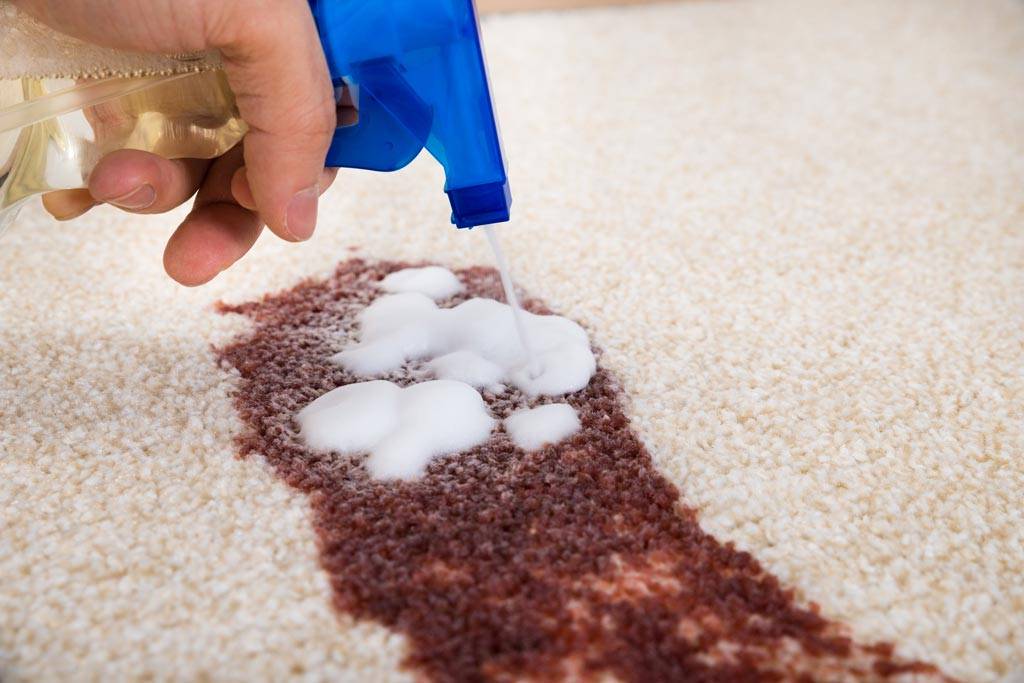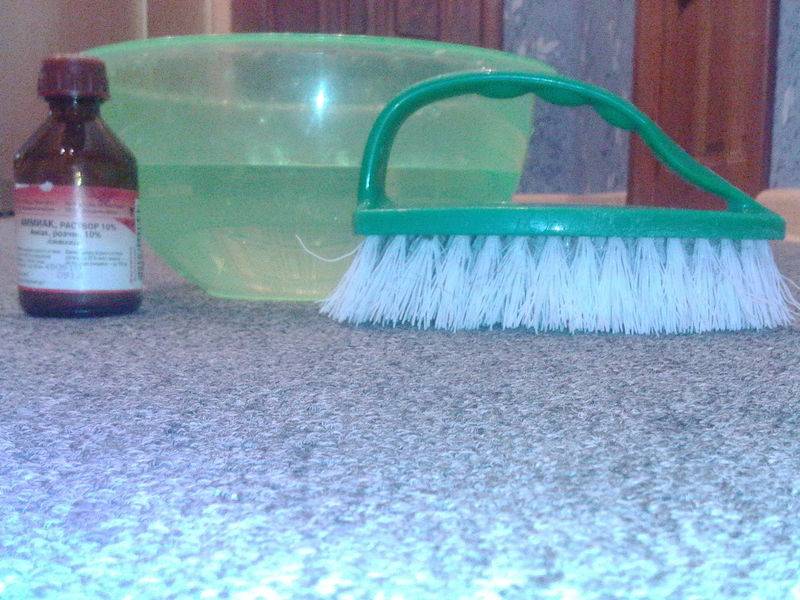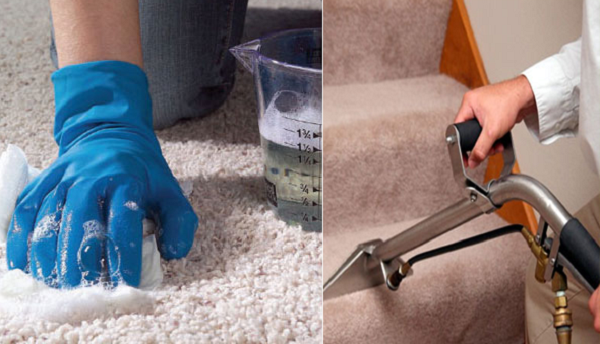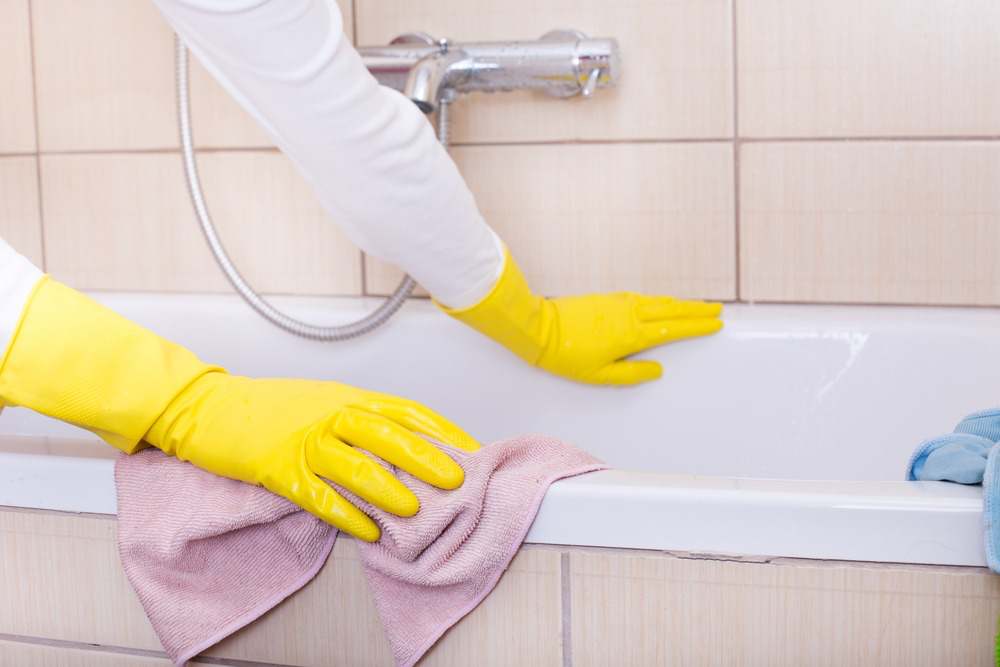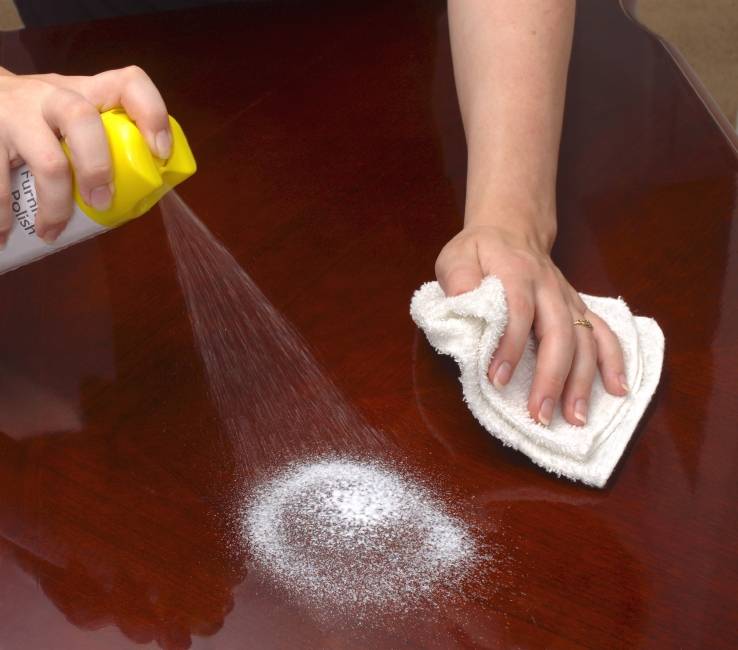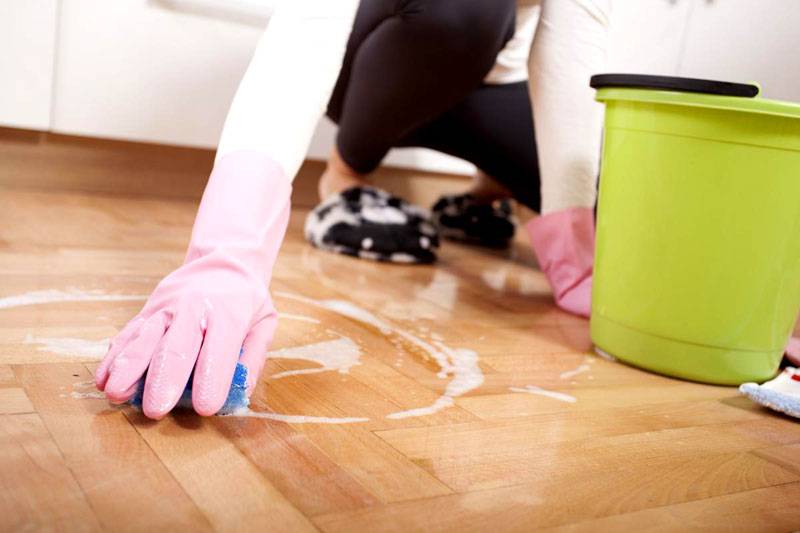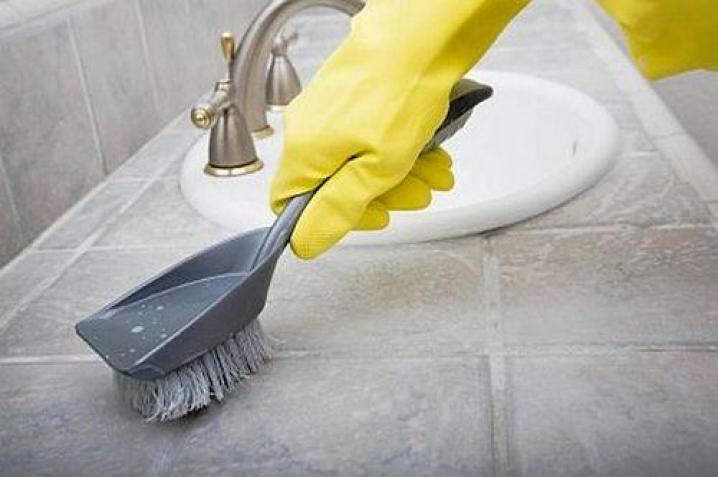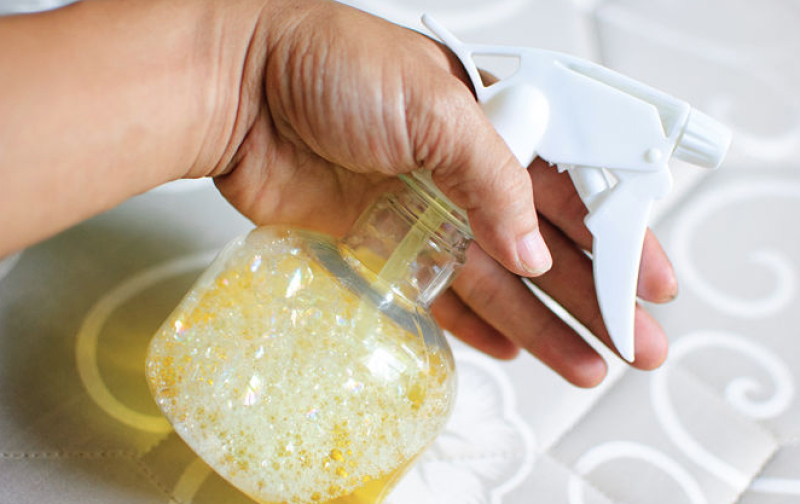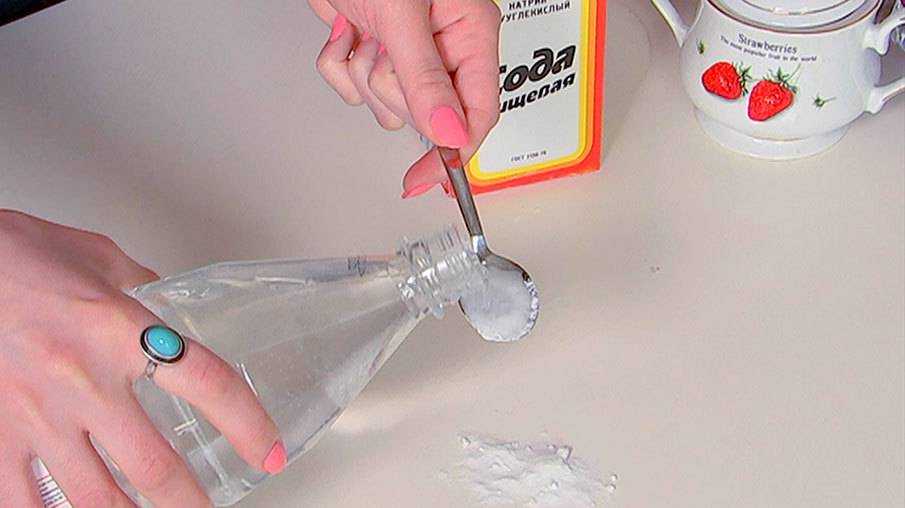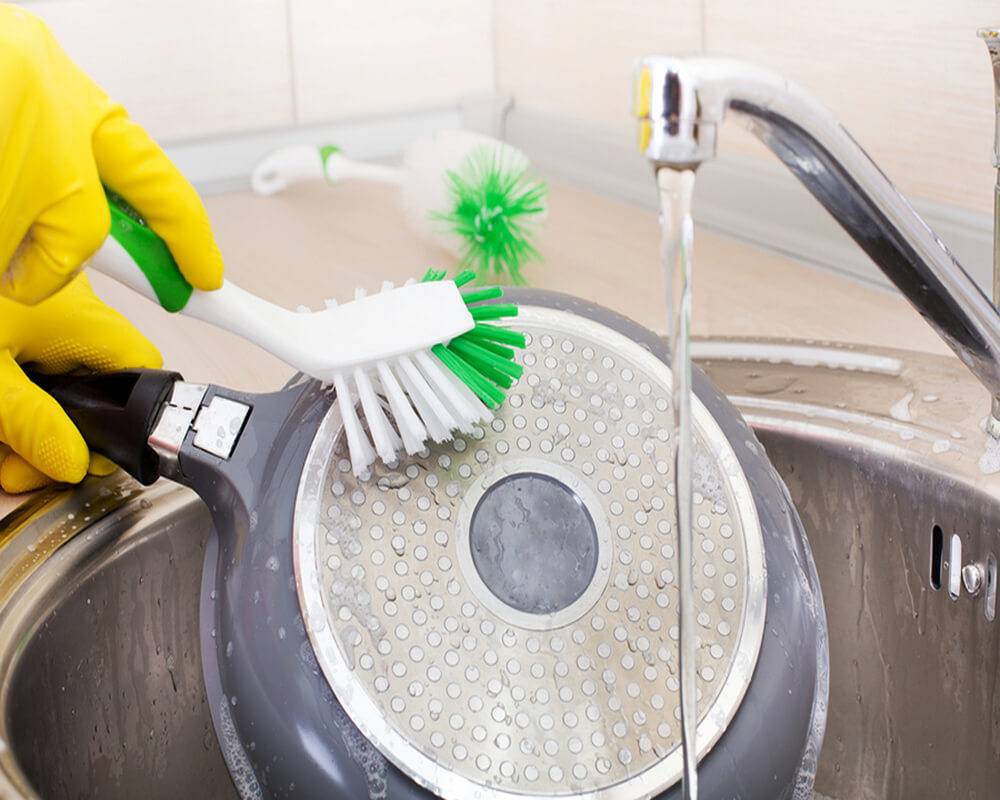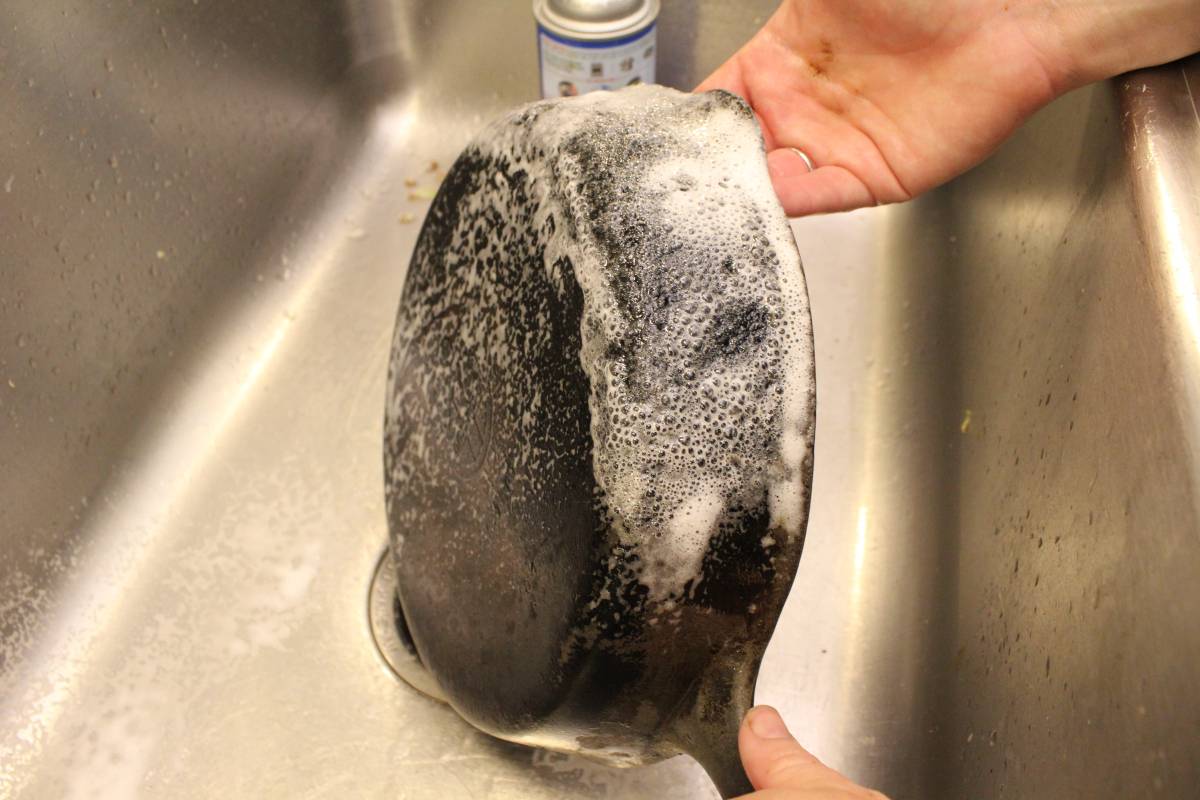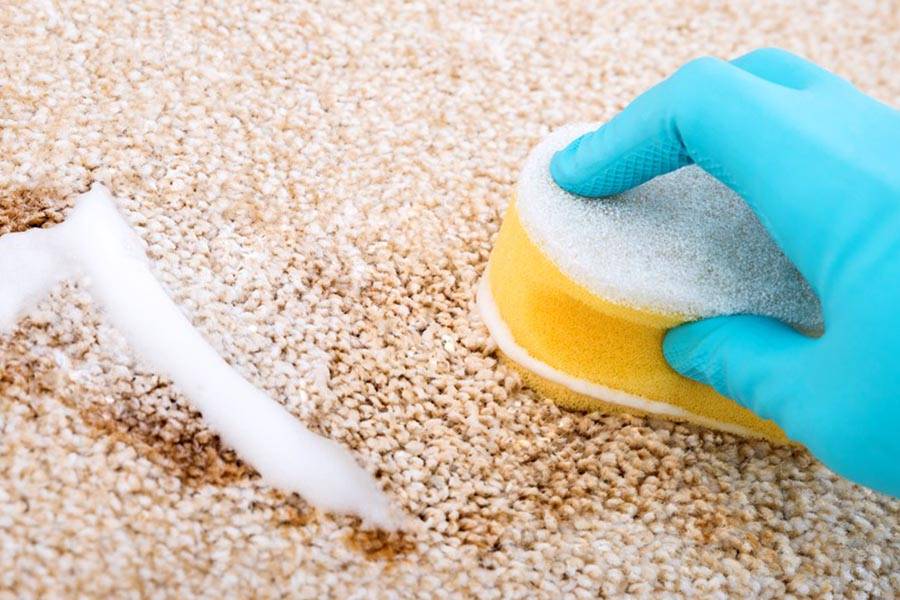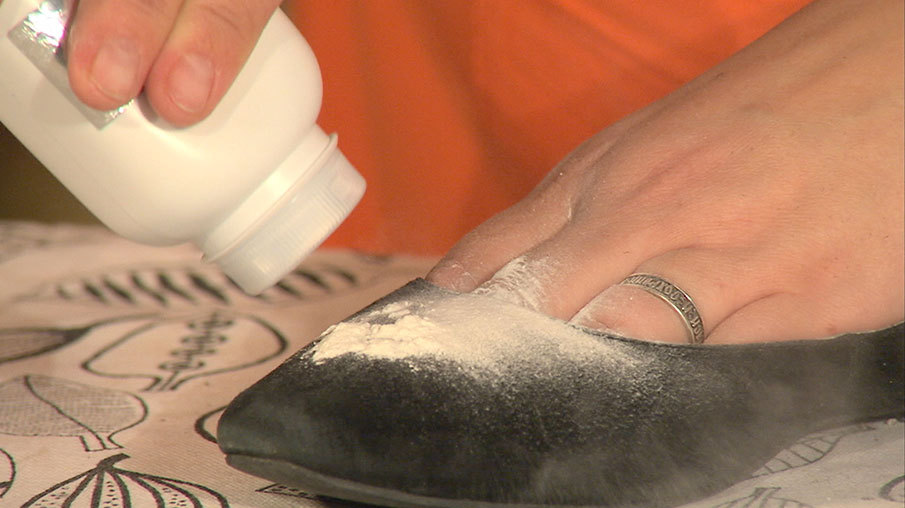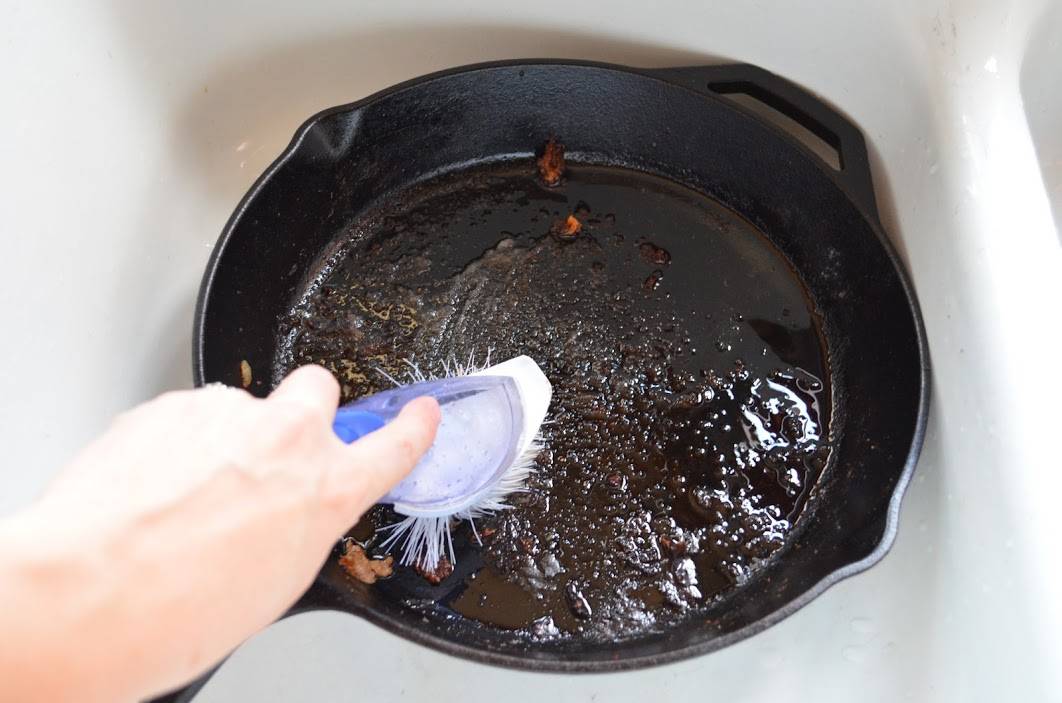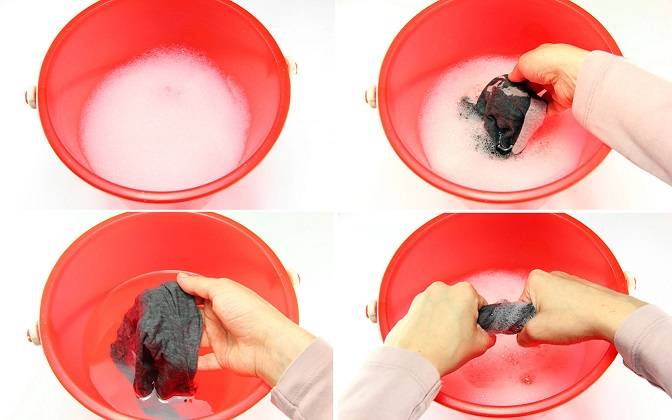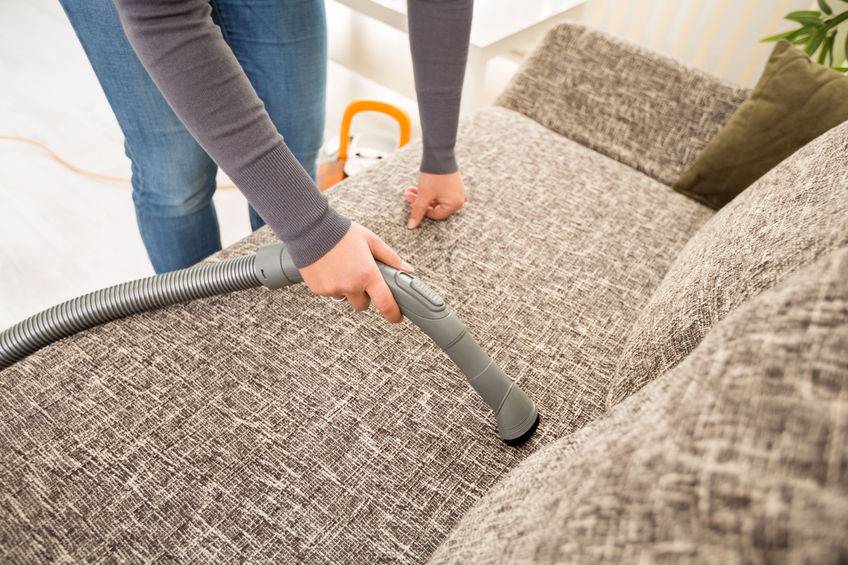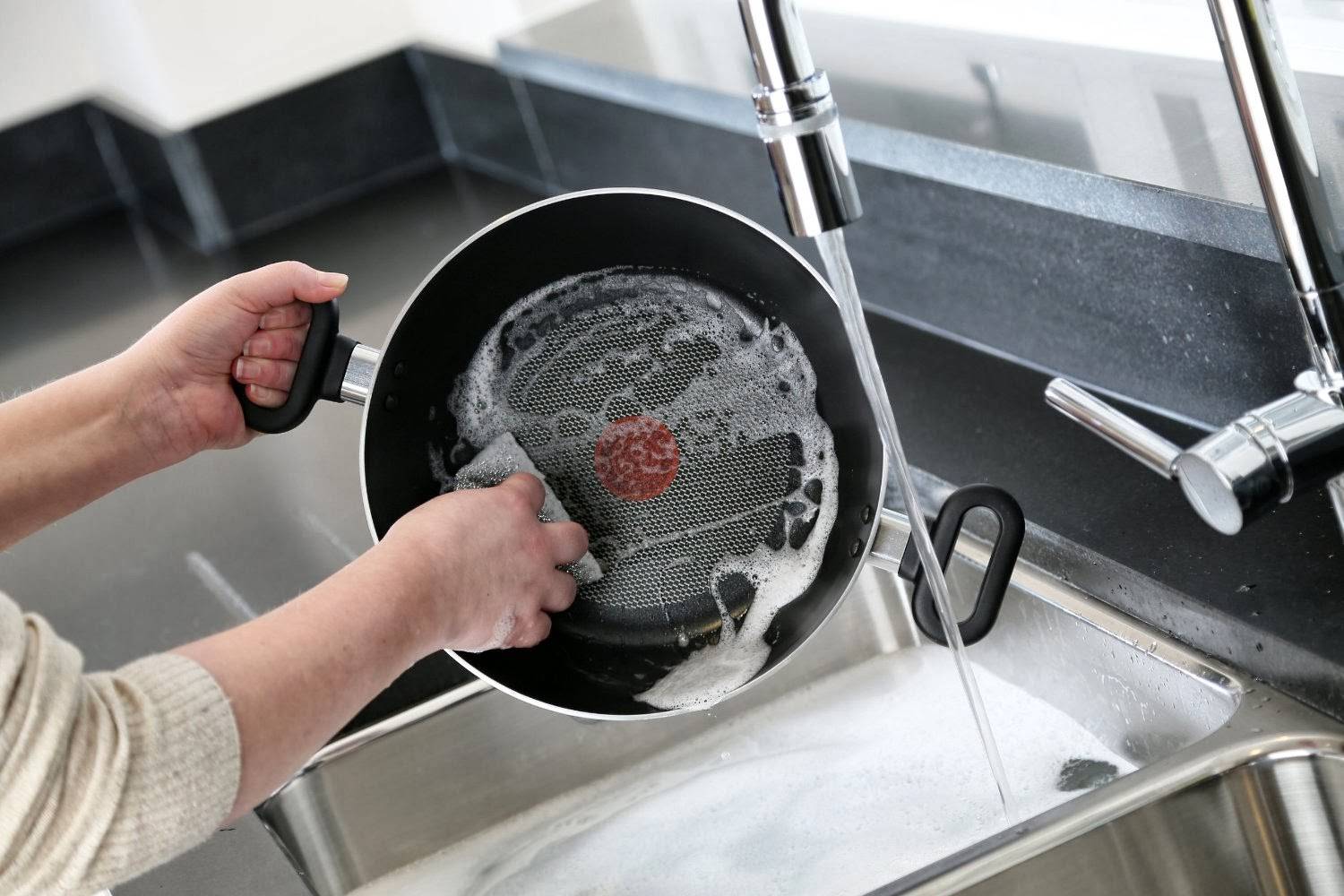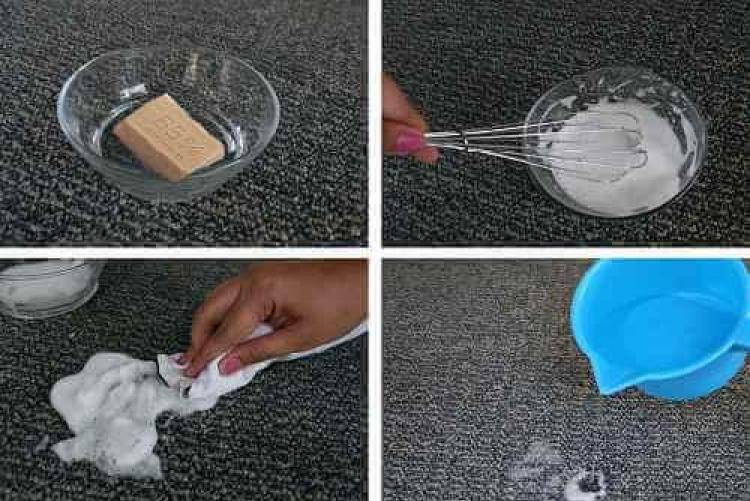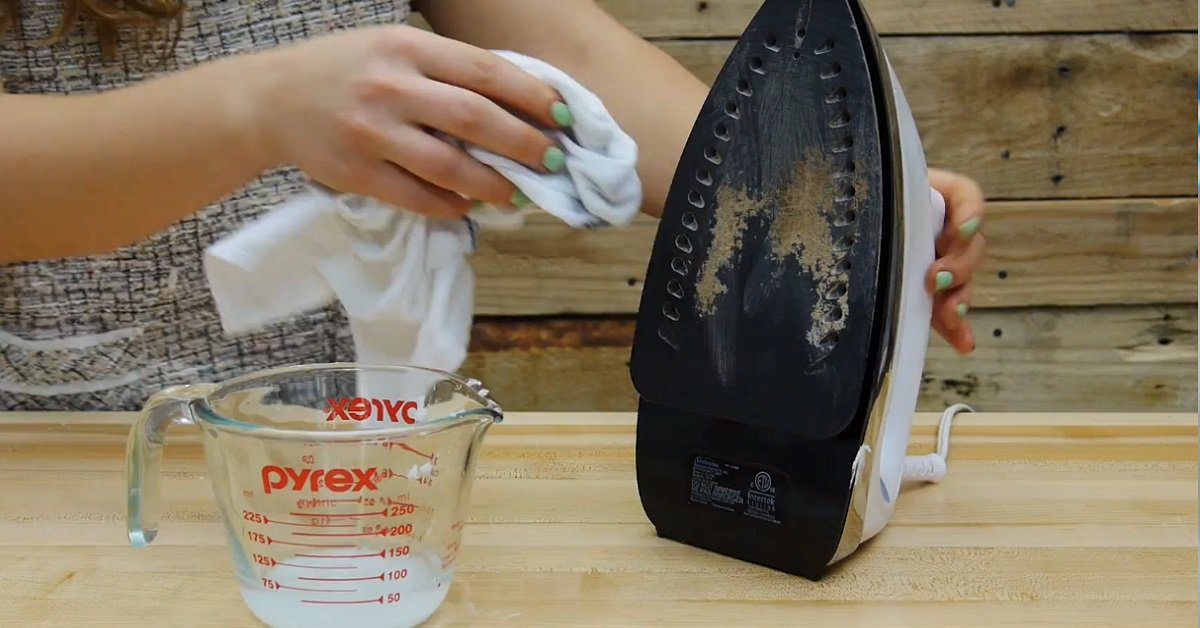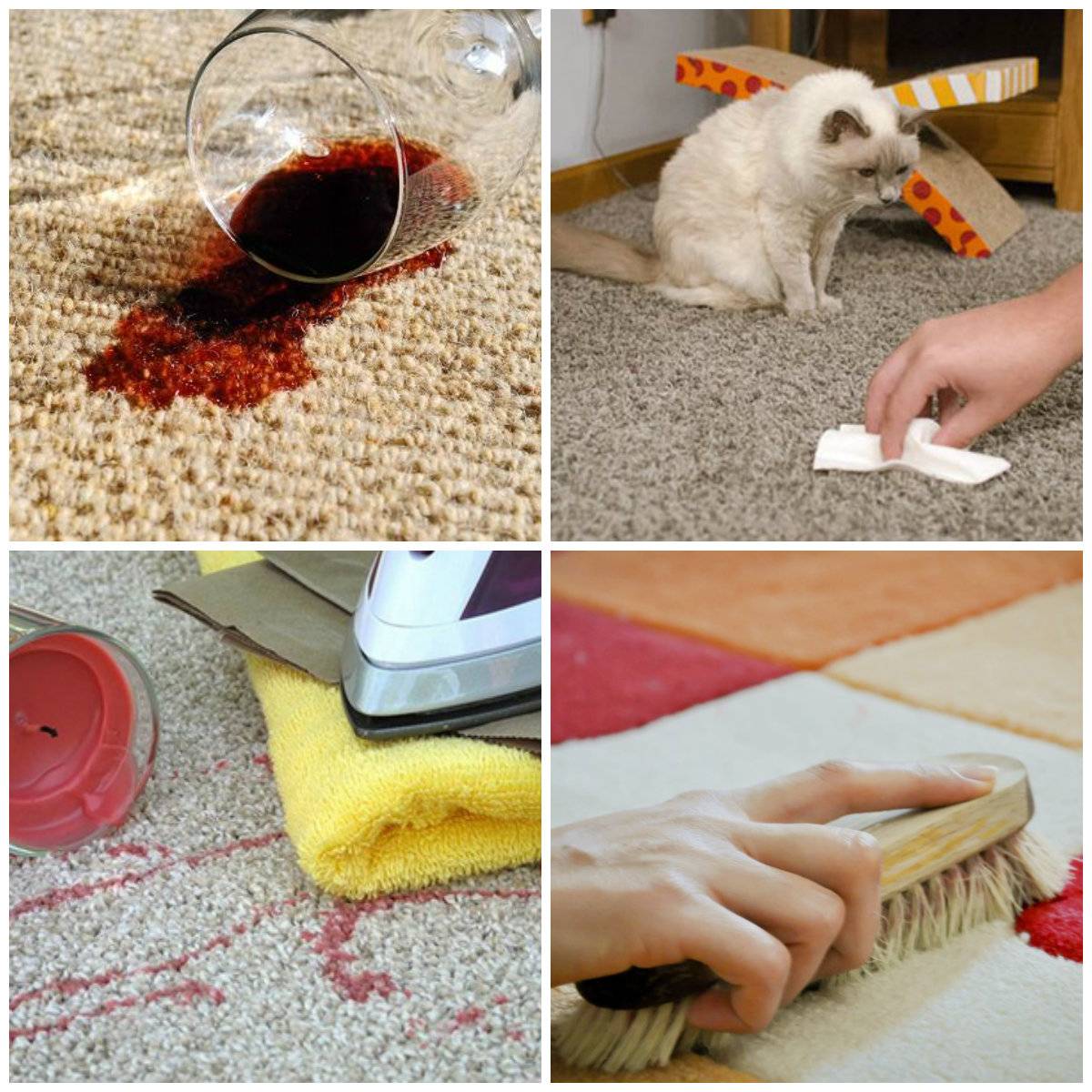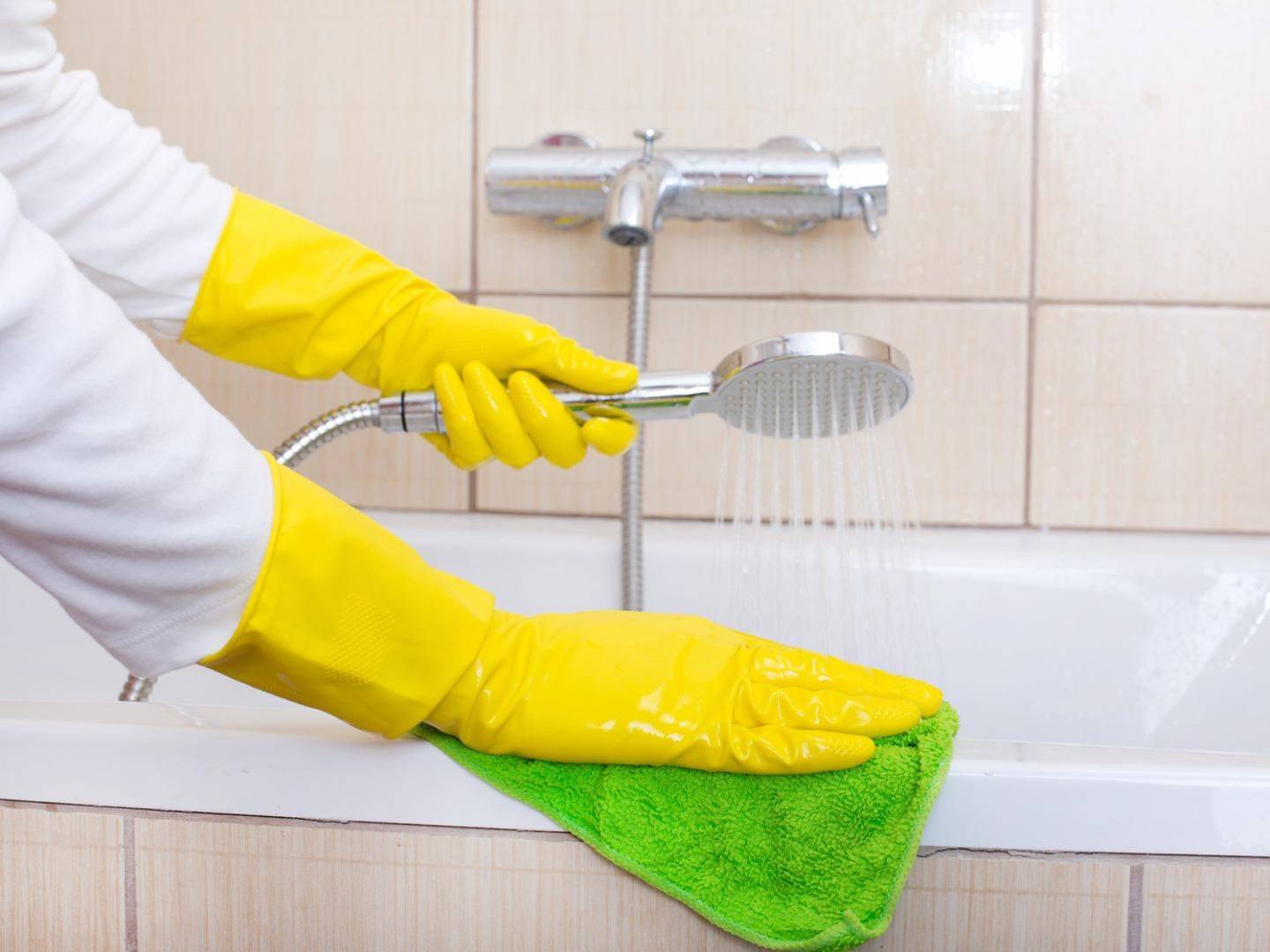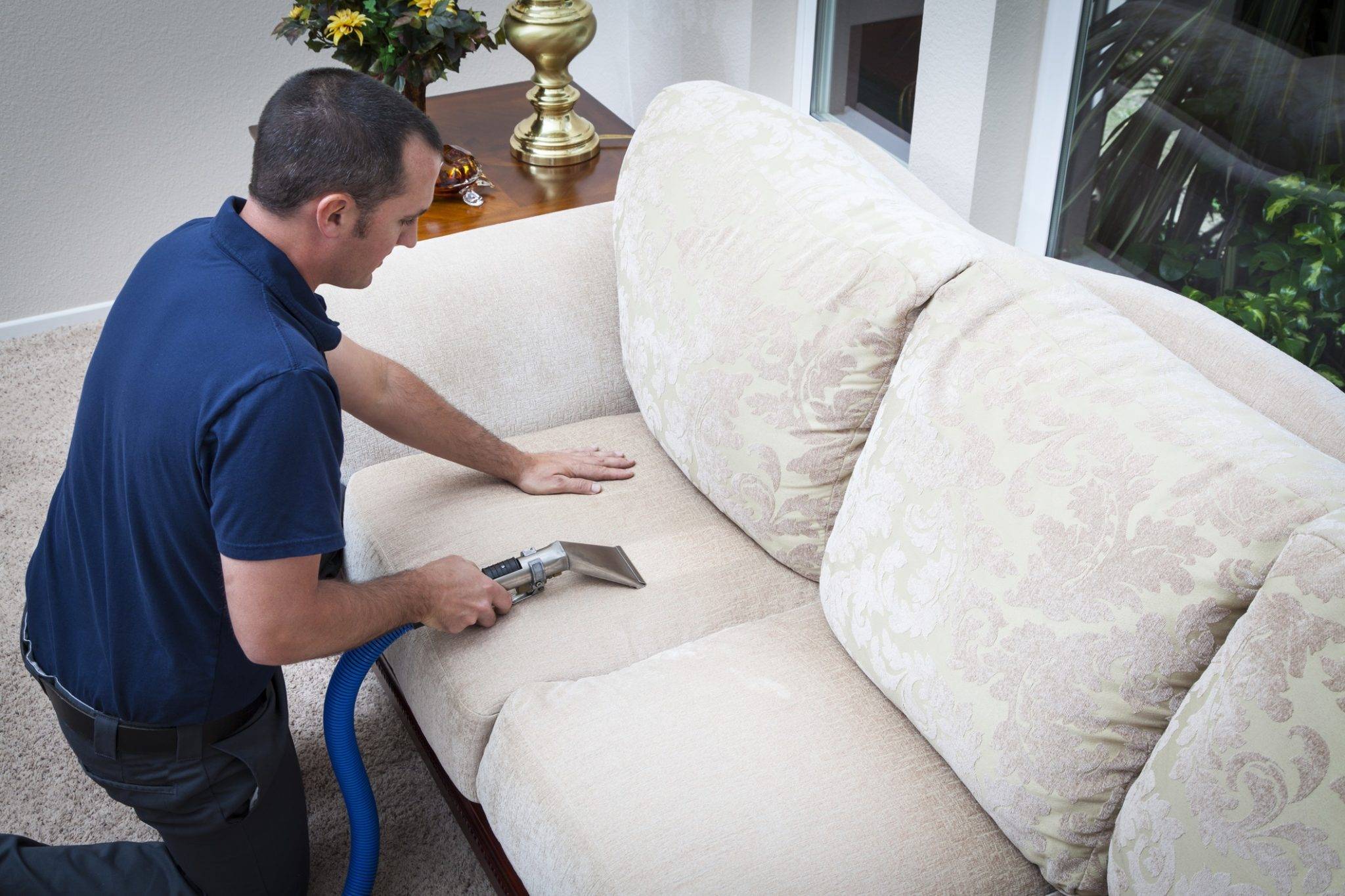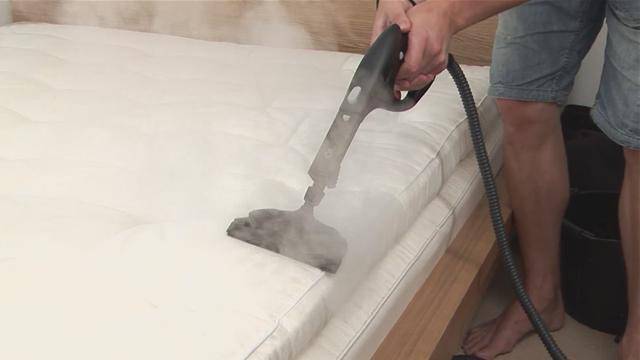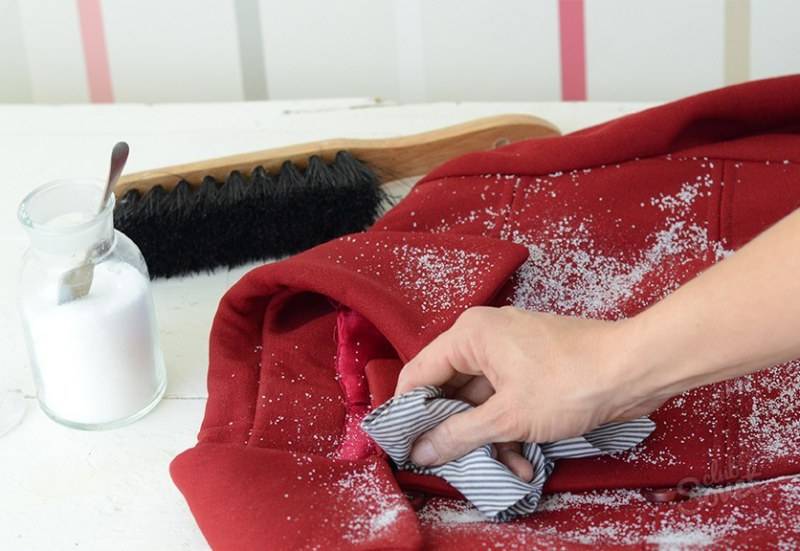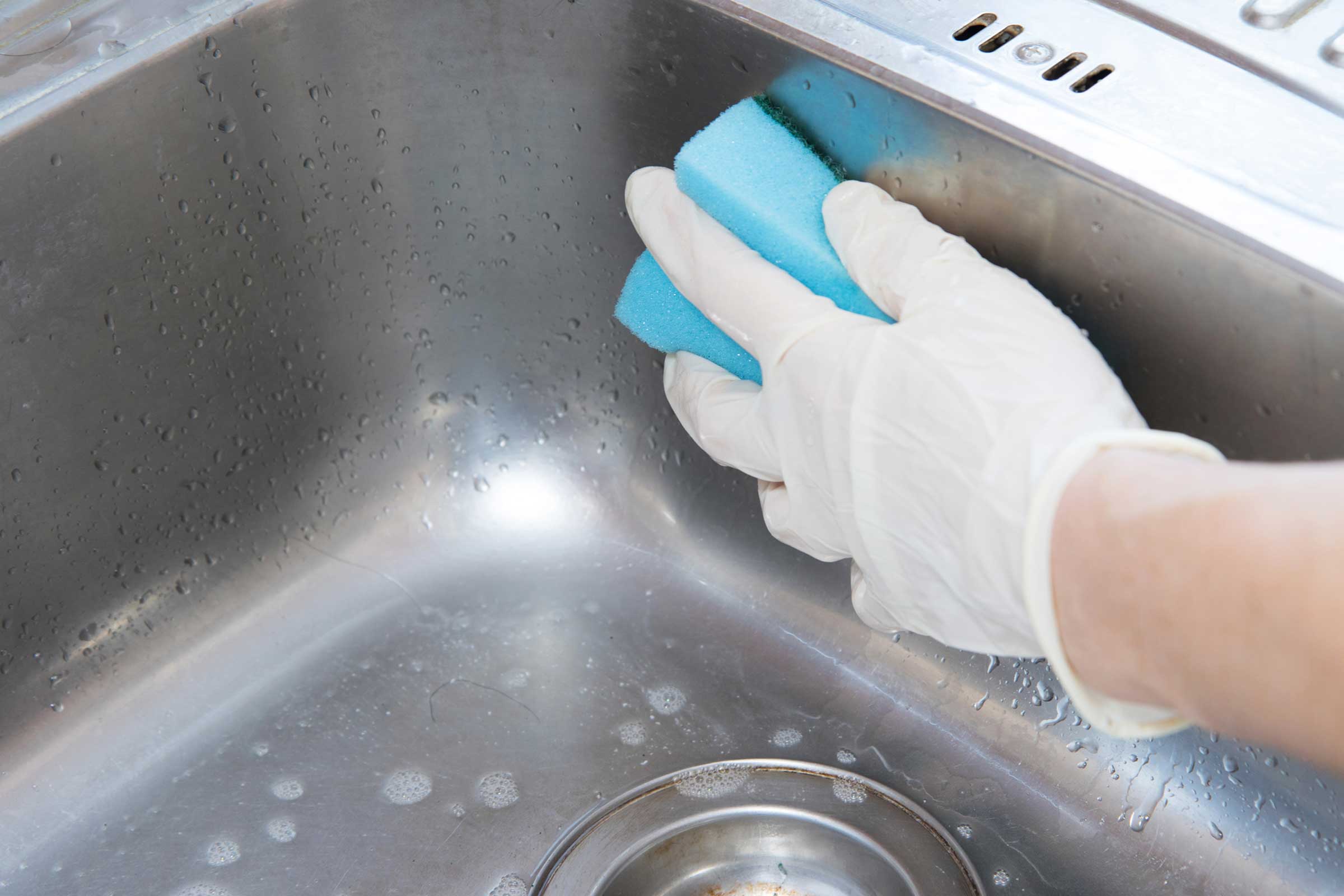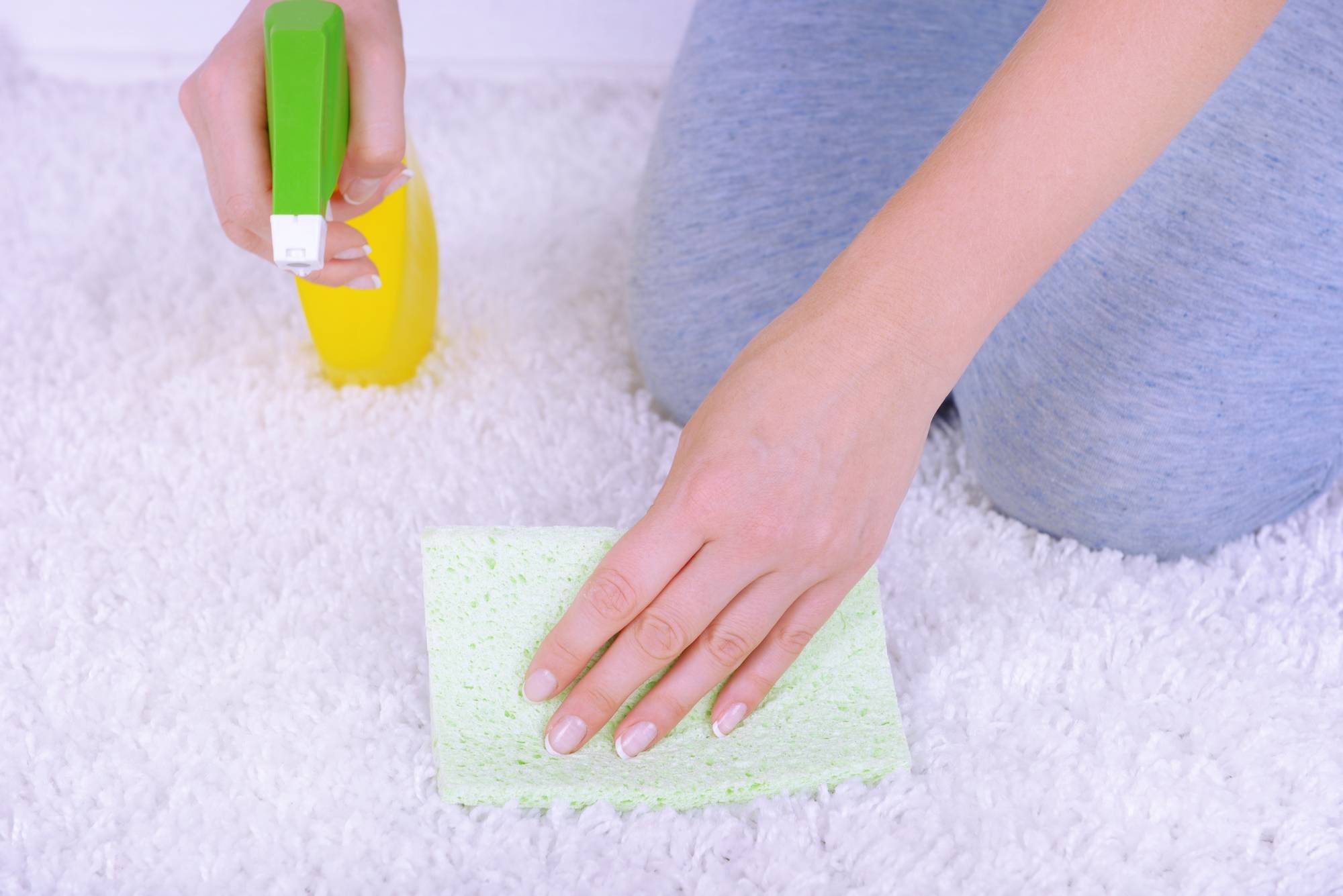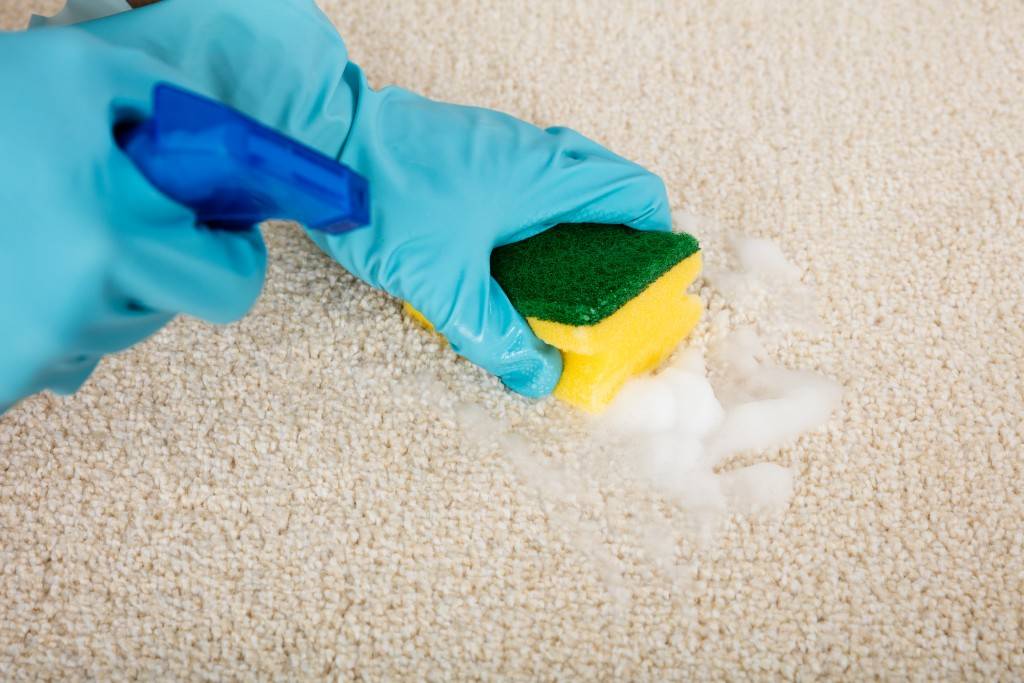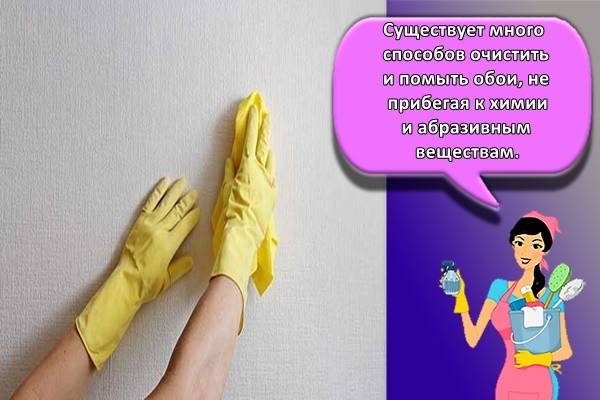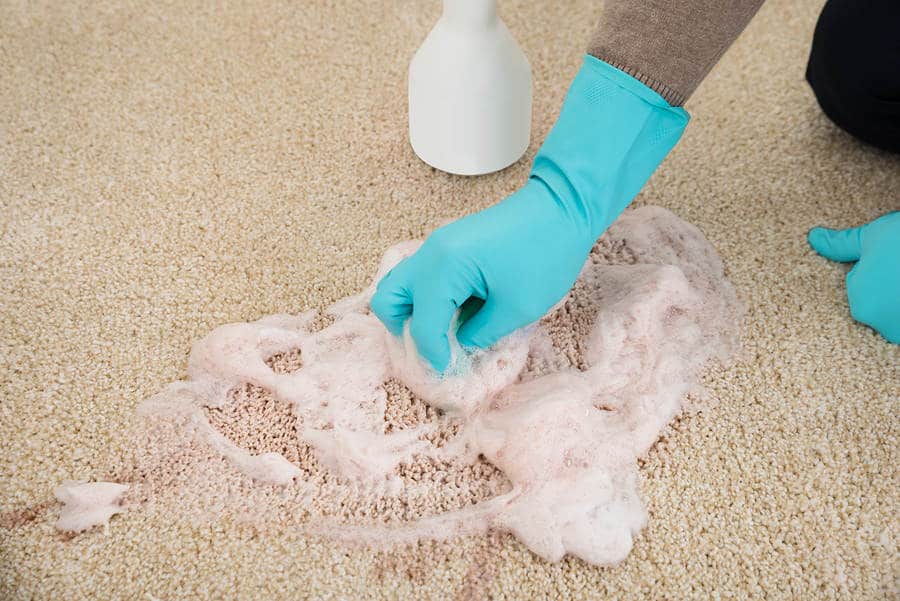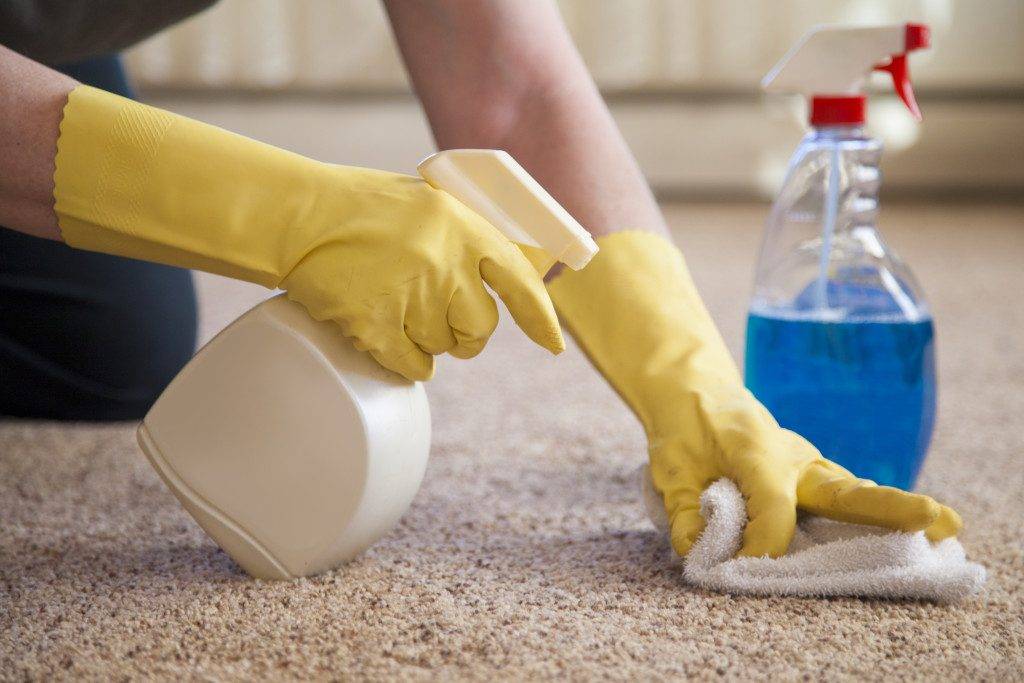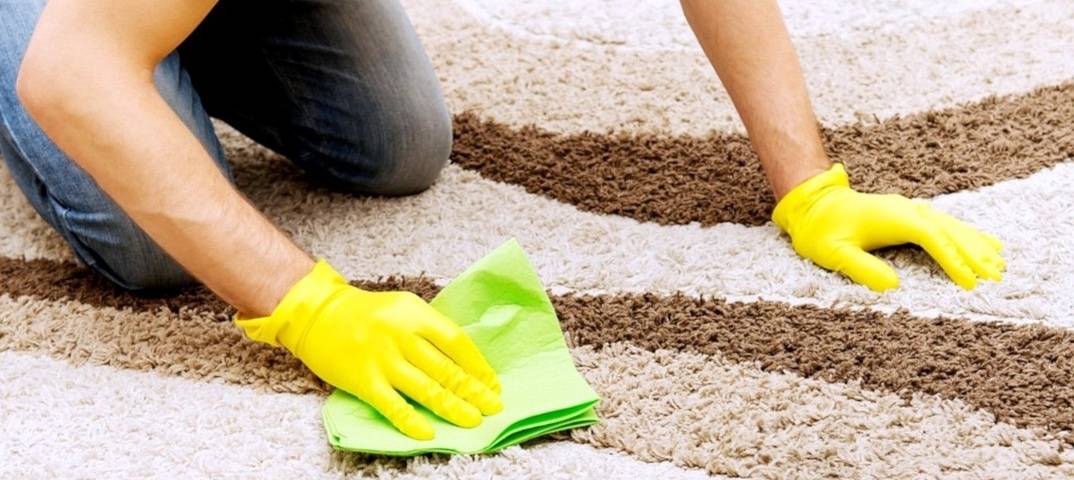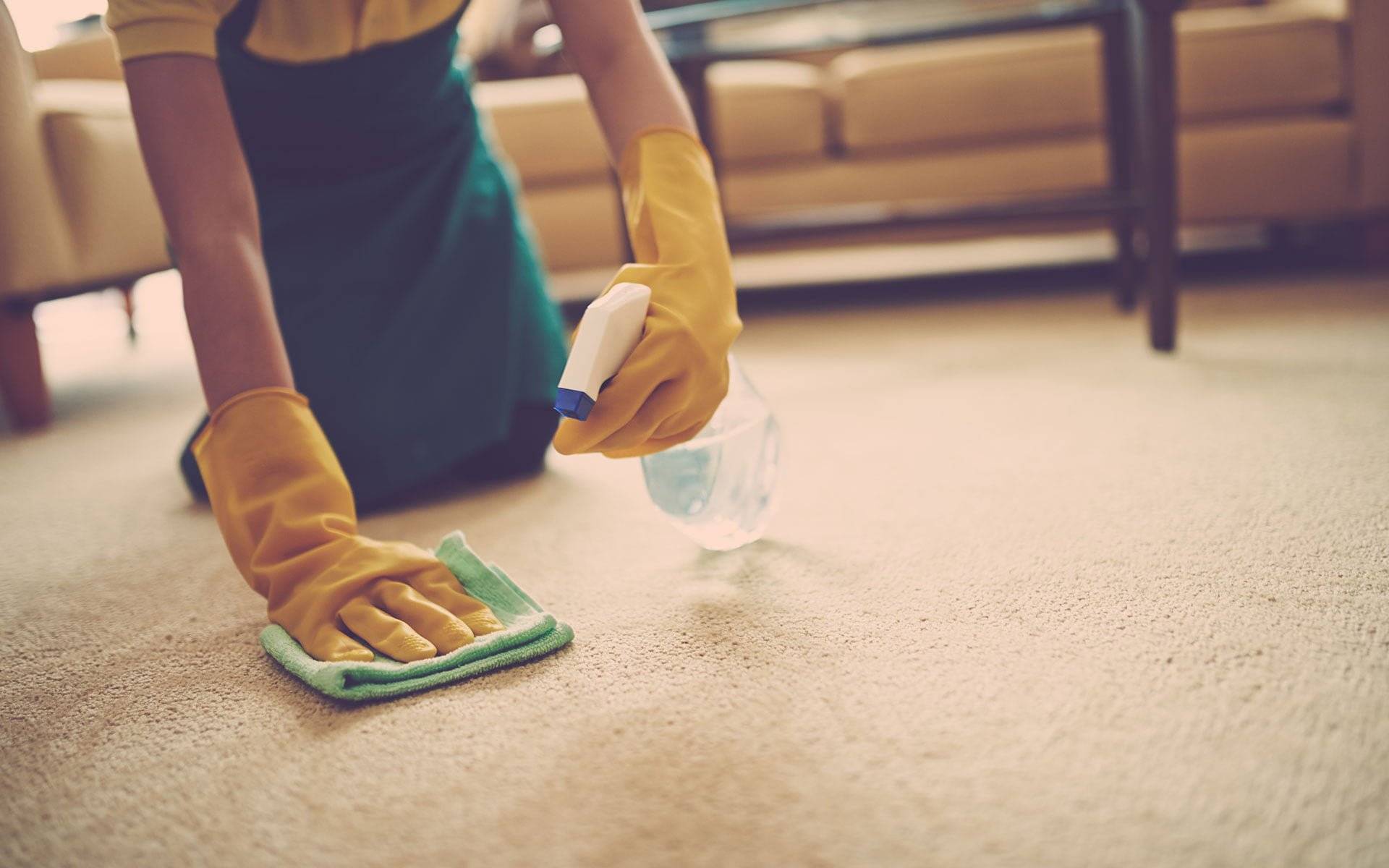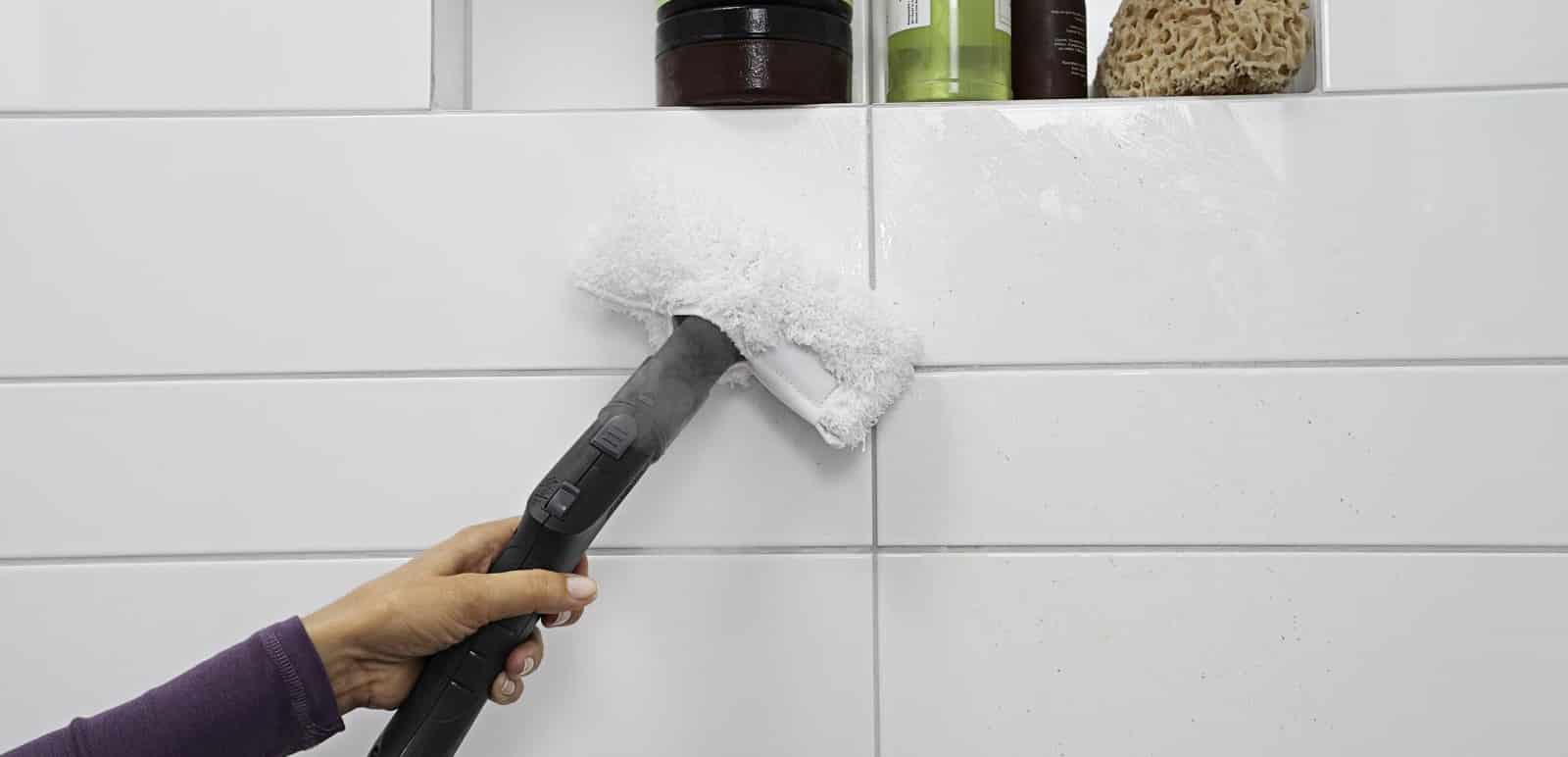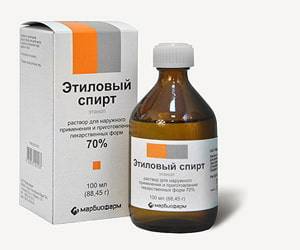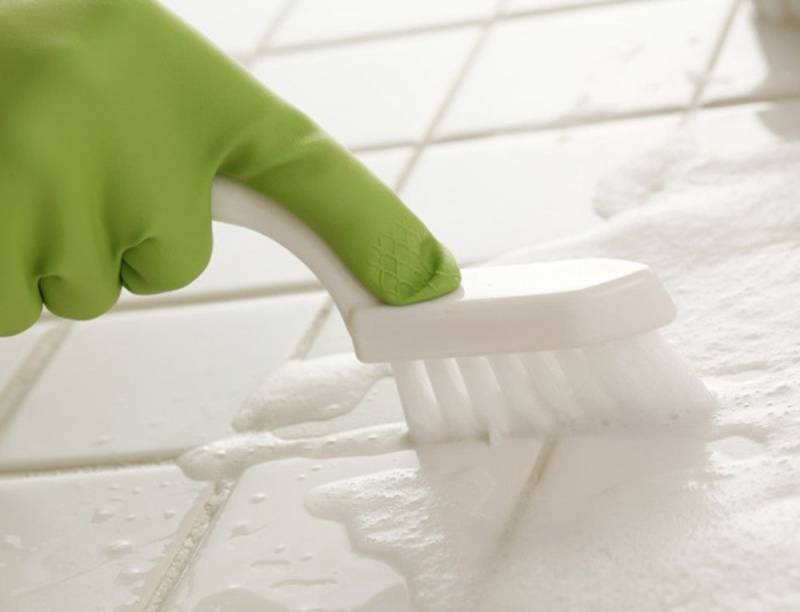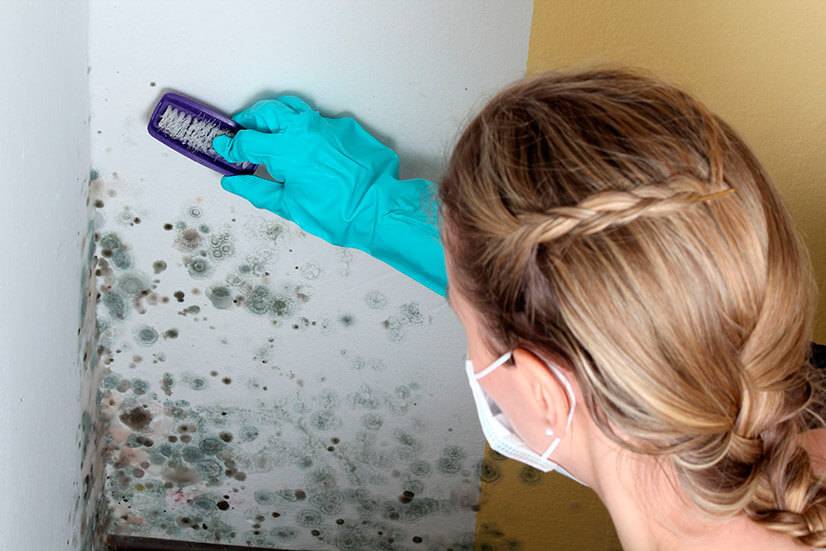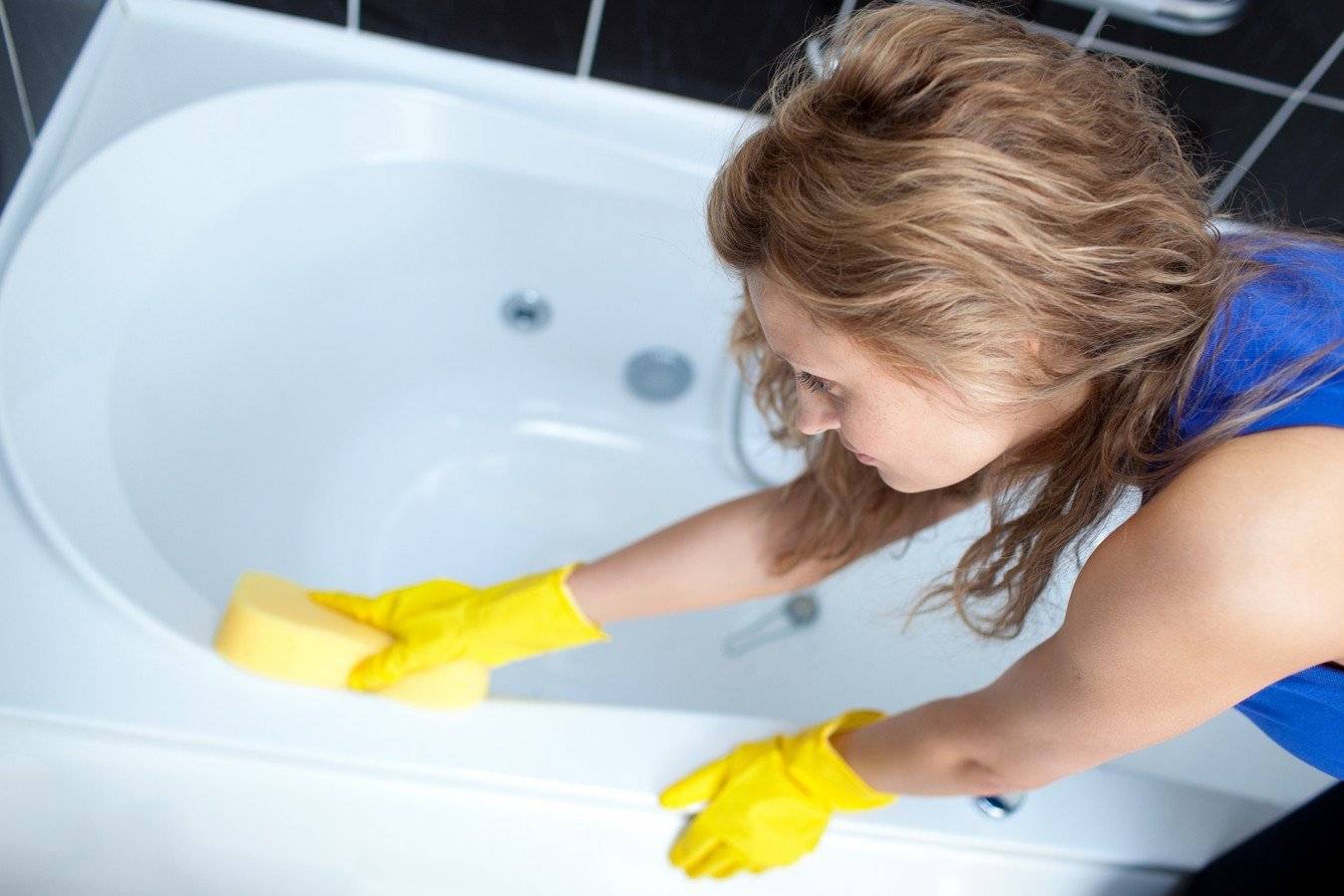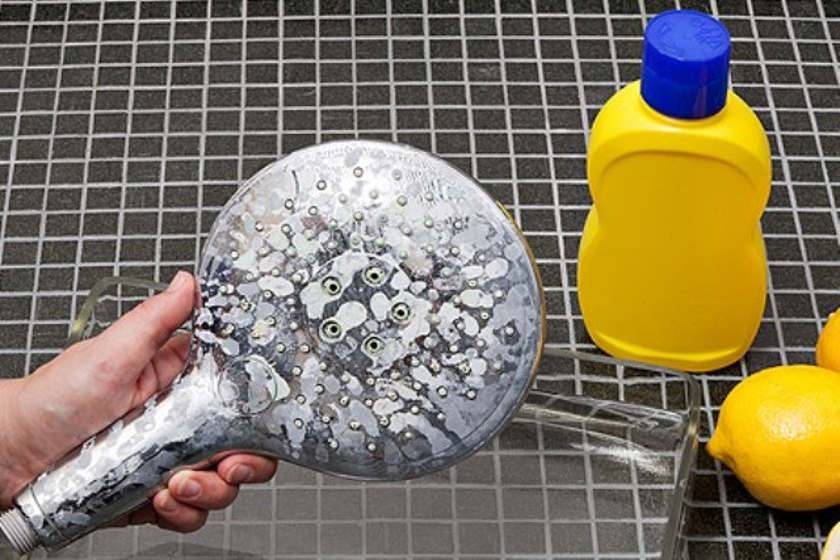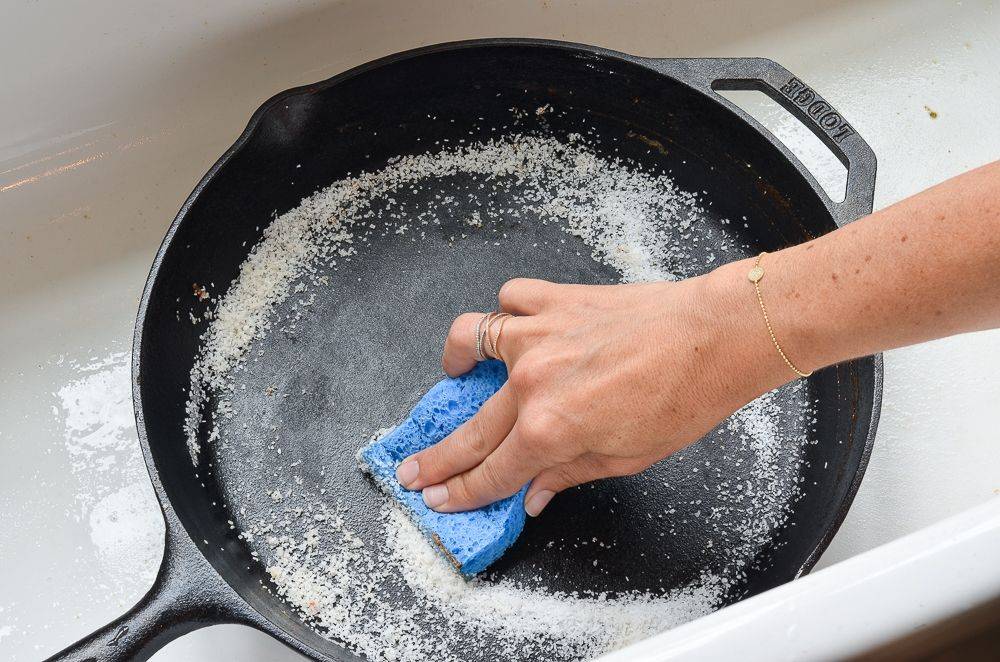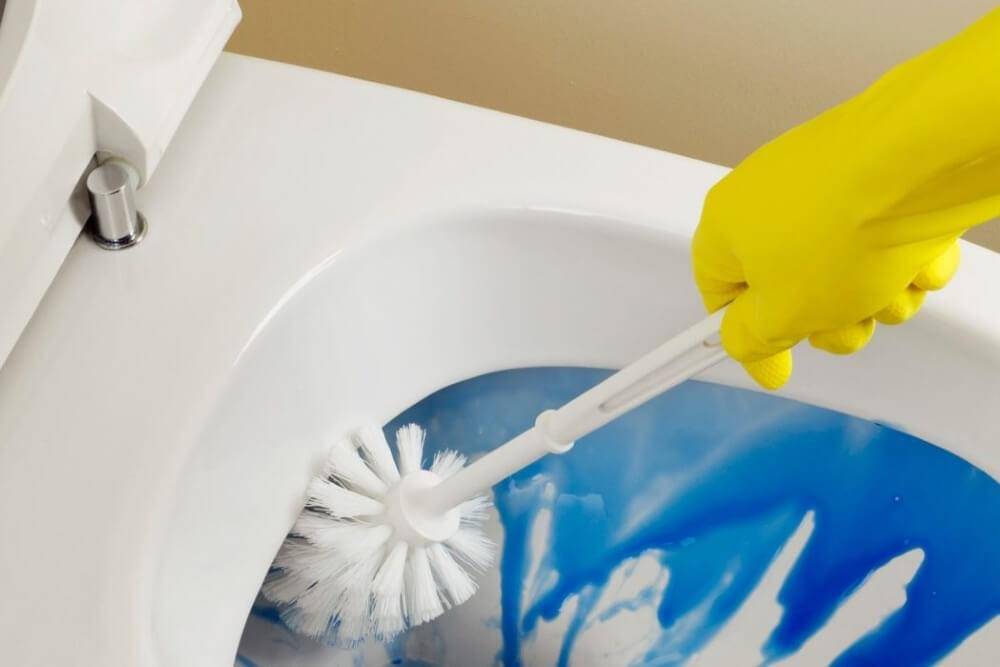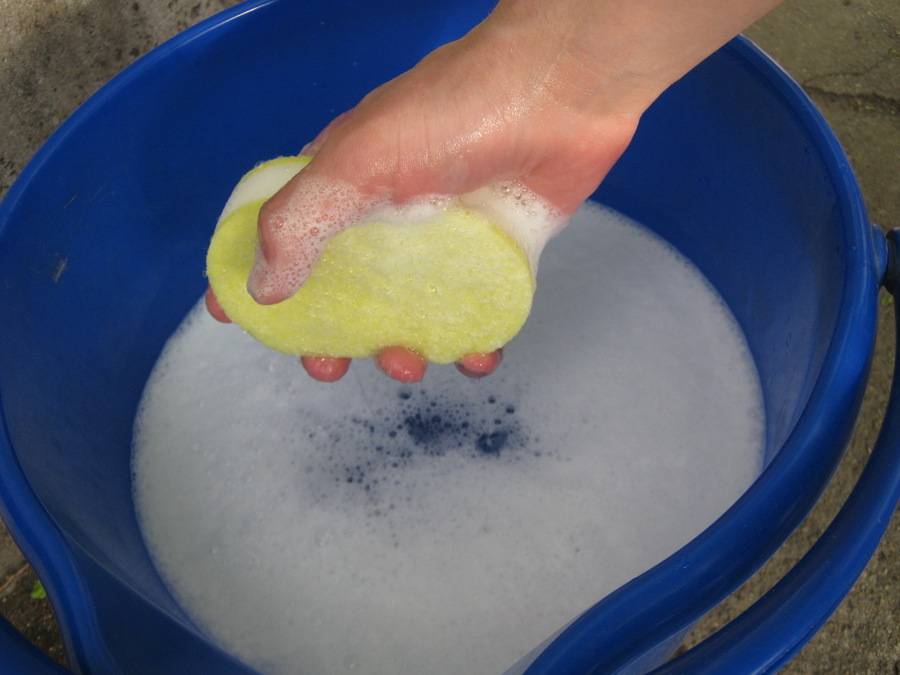Wallpaper cleaning rules
It is easy to wash the wallpaper with special or improvised means, if you know what kind of covering on the walls. You can find out the brand on a roll or ask a store consultant. Before buying building materials, their use is carefully thought out. Cleaning conditions depend on the type and grade of finish.
Types of wallpaper:
- water-resistant cloths may be gently wiped with a cloth moistened with water without using detergents;
- washable coatings can be cleaned with soapy water;
- super-washable, resistant to water, can be washed using any detergent;
- resistant and super-resistant to rubbing.
The packaging indicates the marking with the maximum degree of contact of the web with water. Before washing, you should consider the type of wallpaper, the material from which they are made.
Paper
The coatings attract with their appearance and low price. It is contraindicated to wash them with water. When in contact with liquid, they peel off the walls.
You can clean paper wallpaper from dirt with a soft brush or a clean broom. Baby powder or talcum powder is used.
Builders advise varnishing the paper finish so that the canvases become moisture resistant.
Vinyl
The coatings have a hydrophobic surface. The accumulated dust and dirt can be removed with a vacuum cleaner or a soft bristled brush. Then wet cleaning is carried out. Technologies have made it possible to create a coating with high resistance to moisture and mechanical damage. They serve for a long time. You can wash vinyl wallpaper using household chemicals and home folk methods.
Vinyl coverings are used for rooms with a high risk of contamination: kitchens, hallways.
Smells are not absorbed into such a canvas, it is easy to get rid of stains.
Detergents
You can wash washable wallpaper from dirt in the kitchen with foaming agents and soap solutions. The coating is wiped with damp sponges and detergents. The decoration includes paper, you cannot use a lot of water for cleaning.
Try not to ruin the canvas with too much movement.

Non-woven
The sink depends on the marking, it is indicated on the package or the liner of the roll. Most of these coatings can be cleaned with professional products, common household powders or dishwashing gel. It is allowed to process non-woven wallpaper with a steam cleaner or vacuum it.
Liquid
Not resistant to water. They can be washed off the wall with a damp cloth or sponge.
If the liquid wallpaper is varnished, it becomes resistant to moisture.
Other
Glass fiber for painting withstands cleaning of dirt with water. They are usually painted with waterproof paint so that the surface can be washed. The abrasion-resistant and super-abrasion-resistant blades can be cleaned with brushes, vacuum cleaner.
Wall murals are made on a paper basis, which is afraid of water. Washing should be gentle so as not to spoil the drawing. The smooth surface allows dry dust removal.
The best way to clean textile flooring is with a vacuum cleaner.
How to wash the eyeliner from the wallpaper. 6 incredibly easy ways to remove stains from your wallpaper. Now I know how!
Some of your relatives accidentally stained the wall in the hallway, the young artist decorated the wallpaper with his works, and the mystery of the fat spot on the wall in the bedroom remained unsolved? No time to despair, we will tell you how to properly wash the wallpaper from any dirt.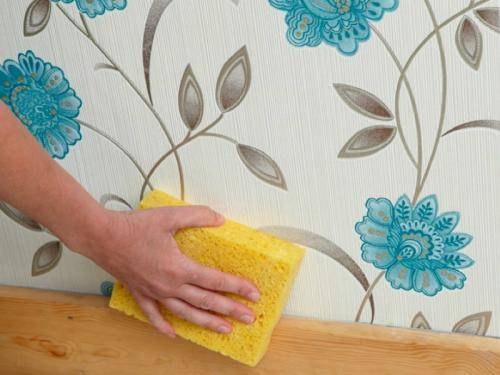
How to clear the wallpaper
First, it is important to determine the type of coverage: cleaning paper or non-woven wallpaper is fundamentally different from washing vinyl coverings. The roll is usually marked with the specified acceptable degree of contact of the material with water.
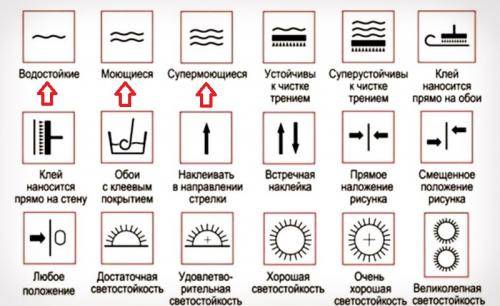 You can also determine whether it is allowed to fully wash the wallpaper in this way: select a small area on the wall, hidden from view (for example, behind an armchair), wipe it with a sponge dipped in soapy water. If the pattern on the wallpaper remains intact, the coating can be washed.
You can also determine whether it is allowed to fully wash the wallpaper in this way: select a small area on the wall, hidden from view (for example, behind an armchair), wipe it with a sponge dipped in soapy water. If the pattern on the wallpaper remains intact, the coating can be washed.
1. Detergents This is the fastest way to clean the wallpaper from dirt with only one drawback - it is contraindicated for paper. But non-woven or vinyl mine for health! Before washing, wipe the surface with a dry cloth, and then treat it with a sponge with a foaming agent.
After washing, blot the surface with a absorbent cloth to remove excess water.
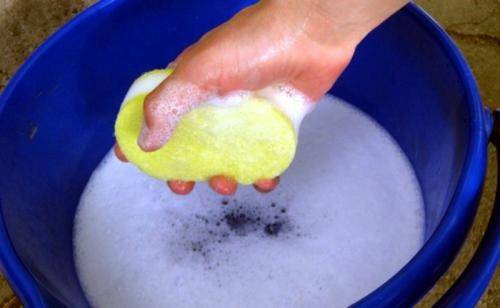 2. Eraser or melamine sponge Light dirt from any type of wallpaper can be removed with a regular stationery eraser. It is also suitable for removing handprints.
2. Eraser or melamine sponge Light dirt from any type of wallpaper can be removed with a regular stationery eraser. It is also suitable for removing handprints.
But the melamine sponge (the modern No. 1 remedy in the fight against stains) removes even traces of markers and ink, but remember that this is a strong enough abrasive that can damage the pattern of non-woven wallpaper. Try it first on a small area.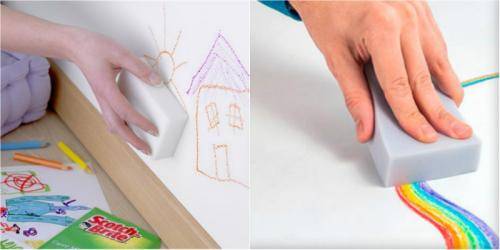 3. Bread crumb This method was used by our grandmothers when it was necessary to remove dirt from delicate paper wallpaper. Press a piece of crumb to the spot for a few minutes: the gluten will absorb the dirt. Repeat the procedure several times.
3. Bread crumb This method was used by our grandmothers when it was necessary to remove dirt from delicate paper wallpaper. Press a piece of crumb to the spot for a few minutes: the gluten will absorb the dirt. Repeat the procedure several times.
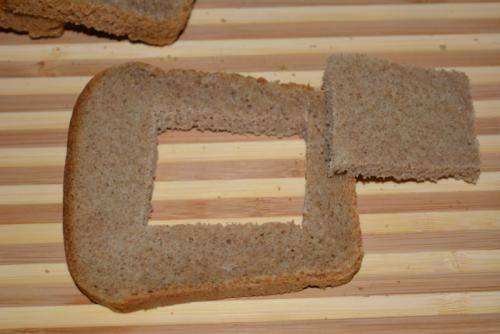 4. Gasoline, alcohol This method is suitable for all types of wallpaper. Mix gasoline with tooth powder. The resulting gruel will cope with old greasy stains: apply the mixture to the stain, wait until it dries completely. Brush off the rest.
4. Gasoline, alcohol This method is suitable for all types of wallpaper. Mix gasoline with tooth powder. The resulting gruel will cope with old greasy stains: apply the mixture to the stain, wait until it dries completely. Brush off the rest.
Ballpoint pens, felt-tip pens, coffee and tea marks will disappear if you rub them with a cloth soaked in rubbing alcohol.
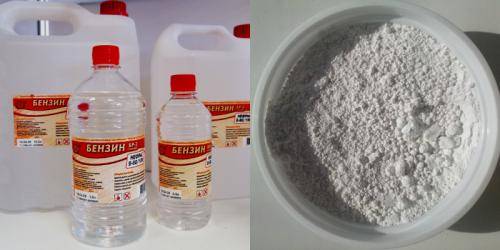 5. Soda, starch, baby powder To remove a greasy stain from non-woven wallpaper, a mixture of water and starch (or soda) is suitable. Apply the prepared paste to the stain and let dry. Brush off the rest with a soft brush, then rinse the wallpaper with warm water.
5. Soda, starch, baby powder To remove a greasy stain from non-woven wallpaper, a mixture of water and starch (or soda) is suitable. Apply the prepared paste to the stain and let dry. Brush off the rest with a soft brush, then rinse the wallpaper with warm water.
But it is better to treat the stain on the paper wallpaper with dry powder (talcum powder) and leave it for a while. Remove the rest of the powder with a napkin.
 6. Iron Apply a paper towel to the stain and iron with a warm (not hot) iron. Change your napkins from time to time and let the wallpaper cool down. Work carefully, as iron stains cannot be removed from the coating!
6. Iron Apply a paper towel to the stain and iron with a warm (not hot) iron. Change your napkins from time to time and let the wallpaper cool down. Work carefully, as iron stains cannot be removed from the coating! No matter how carefully the residents of the house treat the wall covering, troubles do happen. The main thing is not to get upset, but to take the necessary measures in time. Then the wallpaper can be postponed!
No matter how carefully the residents of the house treat the wall covering, troubles do happen. The main thing is not to get upset, but to take the necessary measures in time. Then the wallpaper can be postponed!
Types of wallpaper and features of their washing
There is no universal tool and method that could wash all types of wallpaper. For each type of wall covering, the appropriate cleaning method must be selected. Consider the most popular, common and popular types of wallpaper, as well as how to wash them.
Paper wallpaper
This type is good in that its cost is the lowest compared to other varieties with a large selection of colors and patterns. However, the paper is able to perfectly absorb any dirt, the removal of which can become a real problem. It is possible to wash paper wallpaper from stains and marks in the following ways:
- You can remove the outer layer of dirt with an ordinary brush, gently rubbing the wallpaper. If the nap of the brush is coarse, you can cover it with a clean cloth. It is advisable to repeat this procedure regularly during periodic cleaning of the premises.
- Writing objects or dirty hands can often be easily removed with a regular stationery eraser. It is enough to rub the dirty area with an elastic band, as the coating becomes clean again.
- A greasy stain should be removed from a paper web using paper and a hot iron. The paper is applied to the greasy spot, then it is carefully passed over it with an iron, the temperature of which must be set to a minimum.
- If the paper wallpaper is inlaid with foil elements, the first step is to remove the outer layer of dirt with a soft brush, sponge or cloth. Then wipe the dirty area with a damp cloth and dry with a clean dry cloth.
- In the case of plain white wallpaper, oxygen bleach is perfect, which is applied to the dirty surface for half an hour, and then removed with a dry cloth.
Natural wallpaper
Contamination from natural wallpaper is removed exclusively by dry method. Feather brushes are available on the market especially for this type of surface, with the help of which dust is removed. Due to the presence of a protective dust-repelling layer on natural wallpaper, it is strictly forbidden to wash them.
Vinyl and non-woven wallpaper
Unlike paper wallpaper, non-woven and vinyl wallpaper is washable, and washing wallpaper can be washed with less caution than paper. However, each of them has its own cleaning methods, which are indicated by the manufacturer on the roll label in the form of a special marking.
Marking
- One wave squared means the surface can be cleaned with a damp cloth or sponge without adding any chemicals.
- Two waves in a square allow washing the wallpaper with a damp cloth with the addition of a mild soap solution.
- Three waves - these wallpapers will withstand any damp cleaning with the use of any cleaning agent.
- The scallop means that the wallpaper can be brushed and vacuum cleaned.
Washing method
The procedure for cleaning non-woven and vinyl wallpaper at home:
- Remove the top layer of dust and dirt with a vacuum cleaner with a nozzle.
- Dissolve a solution of water, a cap of washing liquid and two tablespoons of washing powder in a basin.
- Apply the solution to a sponge and gently treat the surface to be cleaned.
- Wait for the wall covering to dry, avoiding drafts in the room.
Plastic covers: cleaning and care features
Not knowing how to clean a phone case from yellowness, you should immediately decide what material it is made of and choose the best way.
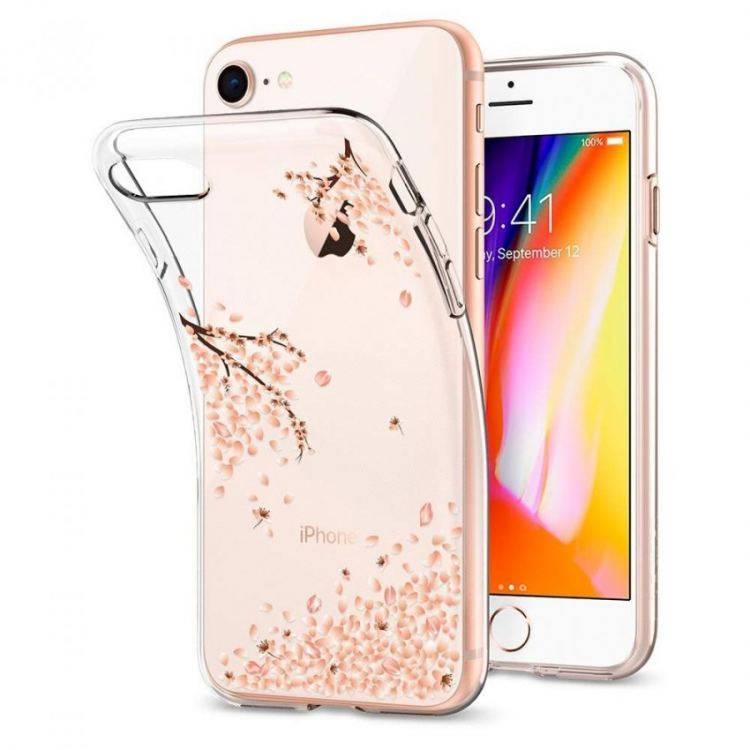
Thermopolyurethane, plastic and polycarbonate accessories for protecting your phone can be cleaned and bleached in different ways, for this, the following procedures are carried out:
- soaking the accessory in a weak solution of vinegar or lemon juice will help remove yellowing;
- processing with alcohol-based wet wipes and drying at natural, normal temperature;
- soap solution is used for washing, not chemicals that lead to yellowing of the cover.
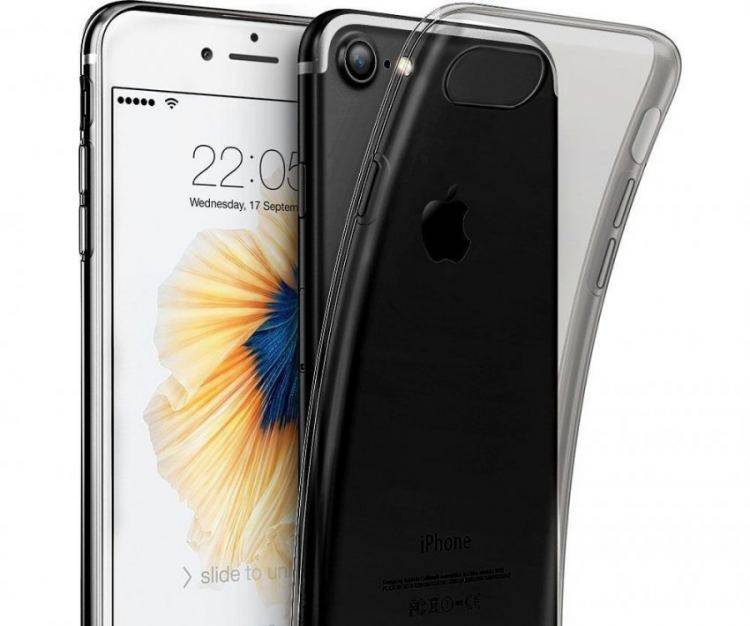
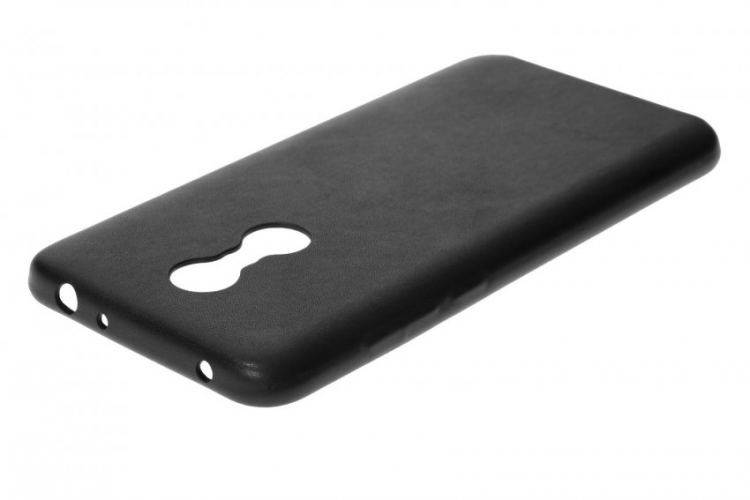
It should be remembered that any dirt must be removed immediately, preventing them from penetrating deep into the structure of the material, and regularly carry out preventive cleaning of phone cases.
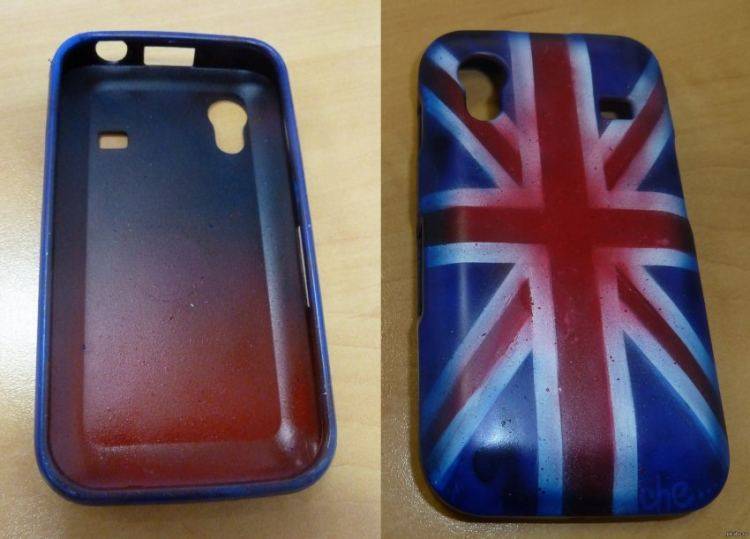
After cleaning cabinets and kitchen utensils, do not forget about the surface of the floor and the walls of the kitchen.
If the walls of the kitchen are tiled, then it is not difficult to wash them using the above means, but what if the walls are painted? How to remove grease so as not to damage the water-based paint? For these purposes, you can use chalk. The sifted chalk powder is mixed with a soap solution and applied to the wall surface. After a while, the surface is washed with warm water and chalk that has absorbed fat is removed from it.
The surface of the floor is cleaned depending on what it is covered with. For parquet, use a solution of washing powder, magnesia, turpentine. When oily stains appear on the parquet, these agents are applied to them and after a while the contaminated areas are cleaned with a kitchen rag. For tiles, vinegar, soda or a mixture of them are used, the same solutions can be used to clean linoleum.
By carefully studying our recommendations and using the advice, you will be able to clean the kitchen cupboard and oven, clean the surfaces of furniture, walls and floors and give the room a clean and comfortable look!
Folk recipes for cleaning
There are many recipes that help clean dirty surfaces. This allows you to choose the best option.
Mustard powder
It is recommended to apply this product to a damp sponge and wipe off the fat. After that, the coating should be thoroughly cleaned of traces of mustard. Then it is recommended to wipe the furniture with a dry cloth.
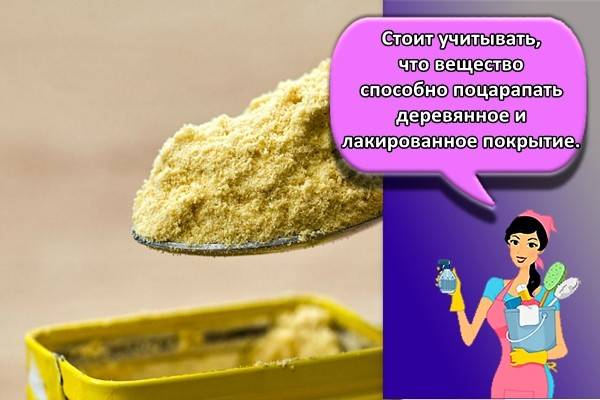
Soap and soda
To begin with, the soap should be grated, and then add warm water to it. Spread the resulting product over the contaminated surface, and apply a little soda on top. Finally, rinse off the composition with water.
Oil and soda
To get rid of greasy stains, you should use a composition based on soda and vegetable oil. It should be borne in mind that lacquered surfaces are not treated with a product, since there is a risk of scratches.

Vinegar essence with olive oil
To do this, mix 100 milliliters of vinegar 9% and 50 milliliters of olive oil. The resulting product should be poured into a spray bottle and sprayed on dirt. Then wipe the surface well with a napkin.
Lemon juice
It is recommended to mix 50 ml of lemon juice with the same volume of liquid. It is worth moistening a soft cloth in the solution and wiping the surface of the wood. This method is used for everyday cleaning.
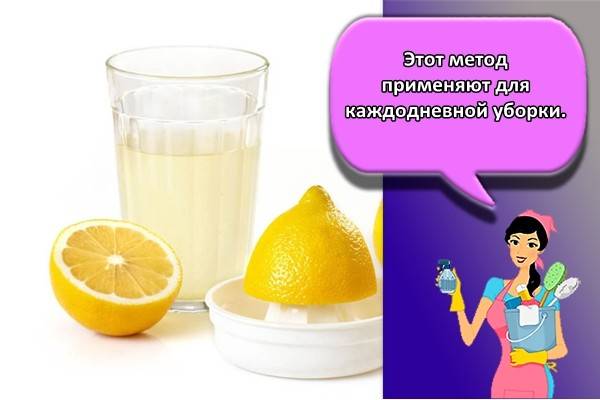
Raw potatoes
For this method, it is recommended to take a medium-sized potato, wash and dry thoroughly. Cut in half and rub over greasy stain. After 3 minutes, polish the area thoroughly with a soft cloth.
Burr oil
In this tool, it is recommended to moisten a cotton swab, wrap it with a napkin and wipe the surface. Then polish the furniture with a dry flannel cloth.

Wheat flour with vegetable oil
This original method allows you to get rid of stubborn dirt. It is recommended to mix flour with vegetable oil and treat the coating with the resulting composition. After that, you need to wipe it with a soft cloth.
A mixture of salt and vegetable oil will help get rid of fat.
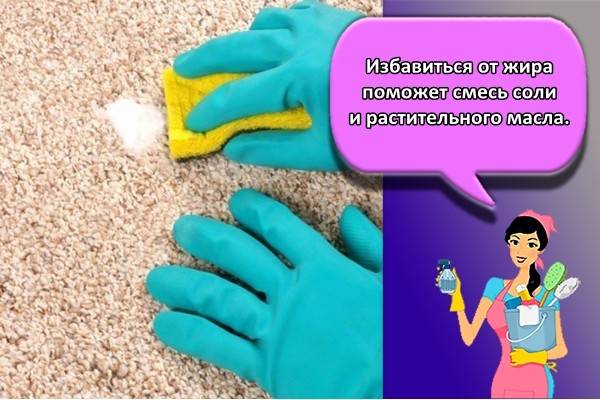
Cabbage pickle
You can use cabbage brine to remove greasy stains. The surface should be treated with the composition, and then wiped with a clean and dry cloth.
General tips and advice
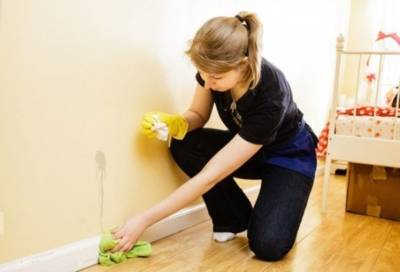 Key recommendations:
Key recommendations:
It is not recommended to heavily wet surfaces with liquid.
You do not need to rub the wallpaper too much, you need to carefully blot it so as not to damage the drawing and soak the paper.
If the wallpaper is multi-colored, you cannot use strong chemicals, bleaches, so as not to wash off the pattern and avoid stains, use only a dry cleaning method.
Remove stains immediately after soiling. If dirt gets on the wallpaper, you must immediately get rid of them by blotting with a clean cloth.
Gently remove dirt from paper wallpaper.
It will be much more difficult to remove stubborn dirt from the surface .. Thus, in order to prolong the life of washable wallpaper, it is necessary to monitor its cleanliness and remove dirt in a timely manner.
You also need to choose the right wallpaper suitable for a particular room (learn how to choose the right wallpaper for the bedroom and kitchen)
Thus, in order to prolong the life of washable wallpaper, it is necessary to monitor its cleanliness and remove dirt in a timely manner. You also need to choose the right wallpaper suitable for a particular room (learn how to choose the right wallpaper for the bedroom and kitchen).
How to wash the eyeliner from the wallpaper. We wash the wallpaper from dirt and plaque
Over time, stains of various origins appear on the wallpaper, which are difficult to wash. But modern chemicals and home remedies can help eliminate pollution.
How to wash the dirt off the wallpaper
It is easy to clean the wallpaper from dirt if you follow some rules.
- When carrying out renovation work, preference is given to good finishing materials. Plain paper materials get dirty faster, and it is more difficult to remove marks from them.
- Non-woven, vinyl products with a resistant coating are washed with a damp cloth. They do not absorb dust, dirt, unpleasant odors; almost any kind of contamination is removed from their surfaces.
- The wallpaper is washed using various methods. Someone uses special detergents for these purposes, someone uses soapy water or folk methods.
- A preliminary test must be carried out on wallpaper in invisible places: behind the sofa, in the corners. After checking, you need to see if the material deteriorates from water or the selected product, and then further cleaning is carried out, taking into account the result obtained.
Read our article on how to quickly clean windows
For testing, the surface is treated with a damp sponge and the agent of choice. If after the procedures the materials have not lost their texture, there are no stains left on them, they have not lost their saturated bright color when drying, you can continue cleaning. If they are deformed, the surface either cannot be washed, or it is worth trying other detergents.
How to wash the wallpaper? Folk remedies
First of all, you need to clean the wallpaper from dust with a vacuum cleaner with a soft brush or dry cloth. If you wash the stains on the dusty surface, then stains will form on the walls.
- Soap solution. Vinyl, non-woven materials are washed with a solution using liquid soap or dishwashing detergent. And non-woven products are washed with clean warm water, vinyl can only be washed with foaming agents. Paper - only dry cleaned. If during the first wet treatment of the walls it was not possible to get rid of stains and dirt, the procedure is repeated after the surface has dried.
- Chlorine-based bleach will help lighten yellow stains and also remove stubborn dirt on light-colored wallpaper. It is necessary to remove the dirt with quick dabbing movements so that the material does not become limp from a large amount of liquid. After washing, gently wipe the cleaning area with a dry soft cloth to remove excess moisture;
- Melamine sponge. It easily copes with dirt on vinyl products, but can harm non-woven, as well as paper ones.
- Bread. This option is suitable for inexpensive paper products. Take a piece of soft bread and place it on the surface to be treated for a few minutes. The procedure is repeated several times in a row until the stain completely disappears.
- Gasoline, kerosene, alcohol. These substances remove not only greasy stains, but also paint, primer, putty. They are used on any surfaces: paper, vinyl, non-woven.
- A mixture of gasoline and tooth powder will help to deal with oily stains formed in kitchens. The product is prepared in the same proportion, then applied to the stain. After drying, remove the residue with a brush.
- Vinyl and non-woven products can be cleaned well with wet wipes. With this method, it is worth choosing products that do not contain various oils.
- Non-woven products are cleaned with a mixture of water, soda or starch. The mixture is prepared in a 1: 4 ratio and applied to the stain. After drying, the remnants of the product are removed with a brush, the place of cleaning is wiped with a damp washcloth.
Chemical and folk methods
Detergents can be added to the water to increase cleaning efficiency. Before use, you must make sure that there are no substances in the composition that are contraindicated for the treatment of specific surfaces. Some substances can damage the metal surface. Do not forget about the harmfulness of some components for the human body, for example, phosphate and chlorine.
When working with such substances, it is important to use respiratory and skin protection
Hydrogen peroxide
A good helper in the household is 3% hydrogen peroxide. This well-known substance perfectly cleans and disinfects batteries. For use in 2-3 liters of water add ¾ bottle.To remove stubborn dirt, you can use pure peroxide by applying the substance directly to the area of pollution or a sponge.
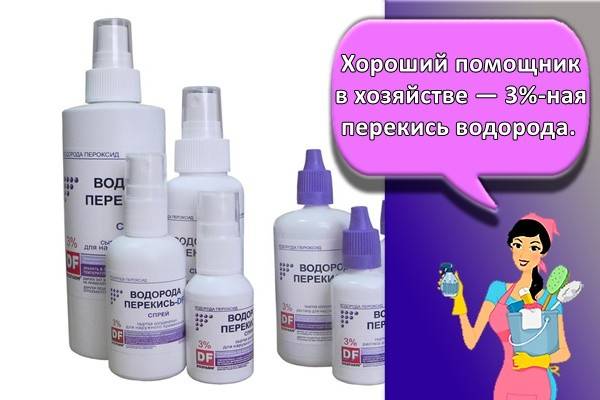
Lemon acid
With the help of citric acid, you can not only effectively clean the radiator from contamination, but also get rid of an unpleasant odor. Typically, the odor comes from stagnant water on the surface of the flower fertilizer radiator. To prepare a solution for cleaning, you need to dissolve 3 tsp in a glass of water. citric acid.
Baking soda
You can use regular baking soda to clean the battery. To do this, dissolve 2 tbsp in 3 liters of water. l. soda. For more effect, you can add 1 tsp. apple cider vinegar and 7 drops of any liquid soap.
Vinegar 9%
Vinegar is poured into a spray bottle for further spraying on the place of pollution, previously cleaned with a damp cloth. After that, the battery must be thoroughly rinsed with water and wiped. Vinegar essence mixed with water in a ratio of 1:10 can also be used. When spraying, the windows must be open in the room, the respiratory tract is better protected with a mask.
Use of special formulations
Effortlessly, in just a few minutes, special cleaning agents will help to remove dirt and grease stains. To remove greasy stains, you can use dishwashing detergents, for example, "Fairy", "Pemolux", "MYTH". Before use, it is necessary to dilute the concentrate in water, foam and wipe the radiator surfaces with a brush or sponge. Light pollution lends itself to laundry soap. Complex contaminants can be removed with the help of special household chemicals designed for plumbing and household appliances, for example, "Domestos", "Mole", "Tiret". Old stains are removed with stain removers such as Vanish and Antipyatin.
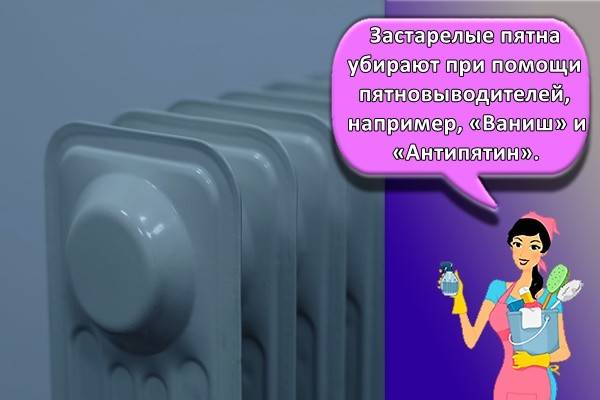
How to wash the wallpaper from nicotine. Main hacks: (January 2020)
Nicotine-painted walls are yellow, smelly and unsightly. If you've recently quit smoking or just moved into a home with painted walls, you're probably wondering how to cleanse nicotine from the walls that have become discolored. Removing nicotine from paint is not easy, if not impossible. However, there are a few things that are usually effective in removing nicotine stains from walls, and primer paint can always be used before painting a different color if other cleaning procedures fail.

Nicotine stains on the wall.
Step 1
Try scrubbing the walls with a tri-sodium phosphate solution by mixing it with water and using a sponge to wipe it down on the walls.
Step 2
Clean the walls with ammonia, but make sure not to inhale the fumes while doing this. Ammonia should only be used in a well-ventilated area and you should wear gloves and safety goggles to protect your hands and eyes from ammonia burning. Mix the 1-part ammonia solution with 1-ounce vinegar in a bucket, then add some liquid dish detergent. In a well-ventilated area, scrub the walls using circular motions.
Step 3
Avoid cleaning the walls with rags or towels, as these items will actually put the nicotine deeper into the paint. Use only a sponge when trying to clean nicotine stains.
Step 4
Clean a small section of the wall at a time and then wipe the area again with a clean sponge. This prevents the walls from overflowing and helps protect any existing paint.
Step 5
Use a primer over the walls before painting to prevent nicotine stains from getting into future paint jobs.
How can you clean the wallpaper?
Instruments
There are several ways to help freshen up your look and get rid of unwanted stains.
- Vacuum cleaner. It will help in the care of any type of wallpaper, it is enough sometimes to carry out along the dusty surface with a vacuum cleaner with a soft nozzle.
- Soft panicle. A method for regularly maintaining cleanliness, getting rid of dust.
- Dry cloth or soft rag. Eliminates dust.
- A sponge soaked in water or detergent. You can wash away stains and dirt.
- Alcohol wipes. Wash off the traces of the pen.
- Iron or hair dryer. Can be used to get rid of stains.
- Toothbrush. Will wash away stubborn dirt with washing powder (only for washing wallpaper).
- Cotton swab or cotton pad. Used when cleaning with alcohol.
- Wet wipes. Get rid of dirt and stains quickly.
What products can be used to wash the wallpaper?
There are both folk remedies for getting rid of pollution, and professional ones, presented in specialized stores.
| Means | Cleaning | Photo |
| Soapy water | Grated soap diluted with water will help wash and freshen the surface. Suitable for cleaning vinyl, non-woven with a moisture-repellent coating, bamboo, acrylic painted wallpaper. | |
| Soda diluted with water | A slightly diluted solution will remove dirt from surfaces marked with maximum wear resistance. | |
| Professional remedies | The stores offer a wide range of professional products suitable for any type of finish. For example, HG wallpaper and painted wall cleaner. | |
| Dishwashing liquid | Dirty water-repellent vinyl, bamboo, non-woven wallpaper can be washed with whipped foam or water and a little cleaner. | |
| Talc or chalk absorbs dirt and greasy stains | Sprinkle the surface for a few minutes, after which it must be cleaned with a dry cloth or simply shaken off. In this way, paper and vinyl wallpaper can be cleaned. | |
| Lemon | With half a lemon, you can clean up the dirt. Not suitable for paper backed wallpapers, paintable and liquid wallpapers. | |
| Rubbing alcohol | A cotton pad moistened with alcohol will clean the dirt from non-woven and vinyl wall-paper such as compact vinyl. |
|
| Floor cleaner | Can be used like a dishwashing detergent. |
How to protect your wallpaper from dirt. What wallpaper can I use
Contamination of the wallpaper can be caused by various factors: in the kitchen it is cooking food, in the hallway there is dirt from the street, in the children's tricks of kids. To protect the wallpaper from dirt, you can create a protective film on top of it, for this you need a special varnish
At the same time, it is important to understand the types of wallpaper and varnish so that all wall painting activities are successful.
Of course, there is a universal varnish that fits perfectly on any surface, even on plywood, even on wallpaper.
But in order to achieve the maximum result that will last a long time, it is better to paint not anyhow, but to pay attention to the type of wall covering, and choose the best option for it
Using white wallpaper in a children's room is not the best option, requiring additional protection.
Let's take a look at the most popular ones:
- Porous materials such as paper or non-woven materials are most commonly treated with protective compounds. To protect against dirt, paper wallpaper can be coated with various compounds, but the most effective will be an acrylic varnish created on a water basis. Water-based varnish is suitable for various wallpapers, it fits well on paper and non-woven, it is used to cover photo wallpaper. It provides high protection against moisture and dirt, without spoiling the decorative look of the wallpaper. It is convenient to paint the walls with this paint and varnish coating, the work does not take much time.
- Vinyl wallpaper does not need to be covered with an additional protective layer in the vast majority of cases. Vinyl is already an excellent modern material that easily transfers moisture and is ready for constant washing. An additional layer of varnish on top can damage the decorative and practical qualities of the wallpaper. It is permissible to varnish only foamed vinyl wallpaper, the material of which is the most delicate and vulnerable. Hot-stamped vinyl canvases do not need additional processing, so they do not need to be painted.
- Natural wallpapers, such as cork, wood, bamboo, most often require additional processing, because they do not tolerate moisture particularly well in their natural state. Knowing this, manufacturers of paints and varnishes have prepared a special varnish for each type of material. For example, it is unacceptable to use ordinary varnish for wallpaper made of cork, since it significantly reduces the elasticity of the material, and at the same time closes the holes and pores through which air passes through the cork. The special composition partly solves these problems. Bamboo wallpapers are not so sensitive, so you can choose any varnish for them, and after the sticker on the walls has been successful, the coating should be spilled. It is advisable, of course, to paint the bamboo with a clear coating, since it already has a pleasant color.
How to clear the wallpaper
First, it is important to determine the type of coverage: cleaning paper or non-woven wallpaper is fundamentally different from washing vinyl coverings. The roll is usually marked with the specified acceptable degree of contact of the material with water.
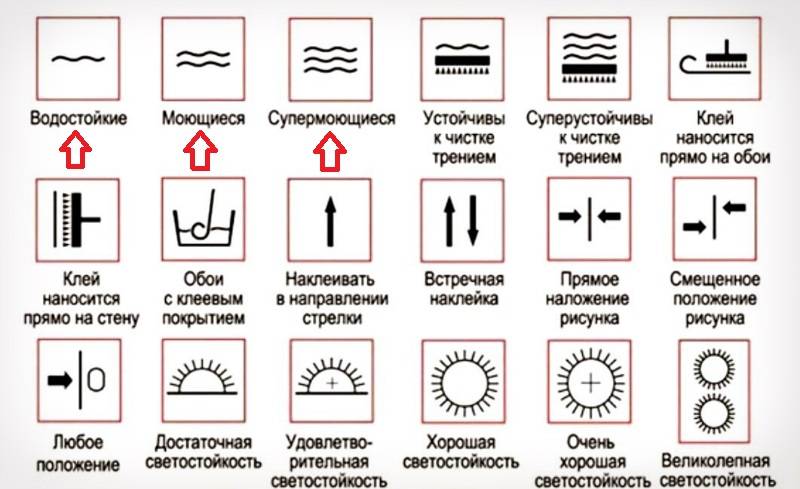 You can also determine whether it is allowed to fully wash the wallpaper in this way: select a small area on the wall, hidden from view (for example, behind an armchair), wipe it with a sponge dipped in soapy water. If the pattern on the wallpaper remains intact, the coating can be washed.
You can also determine whether it is allowed to fully wash the wallpaper in this way: select a small area on the wall, hidden from view (for example, behind an armchair), wipe it with a sponge dipped in soapy water. If the pattern on the wallpaper remains intact, the coating can be washed.
1. Detergents
This is the fastest way to remove dirt from wallpaper with only one drawback - it is contraindicated for paper. But non-woven or vinyl mine for health! Before washing, wipe the surface with a dry cloth, and then treat it with a sponge with a foaming agent.
After washing, blot the surface with a absorbent cloth to remove excess water.
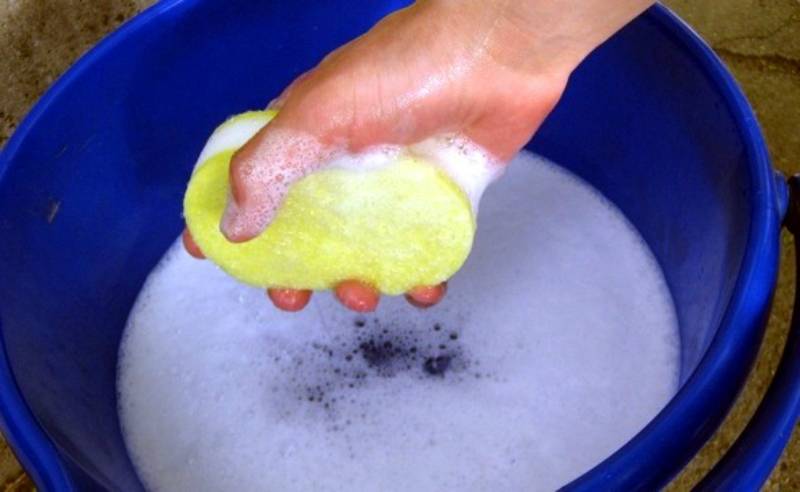 2. Eraser or melamine sponge
2. Eraser or melamine sponge
Light dirt from any kind of wallpaper will help to remove a regular stationery eraser. It is also suitable for removing handprints.
But the melamine sponge (the modern No. 1 remedy in the fight against stains) removes even traces of markers and ink, but remember that this is a strong enough abrasive that can damage the pattern of non-woven wallpaper. Try it on a small area first.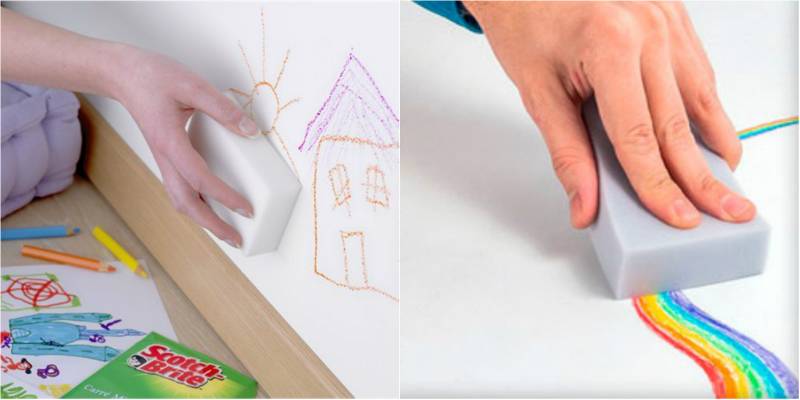 3. Bread crumb
3. Bread crumb
This method was also used by our grandmothers when it was necessary to remove dirt from delicate paper wallpaper. Press a piece of crumb to the spot for a few minutes: the gluten will absorb the dirt. Repeat the procedure several times.
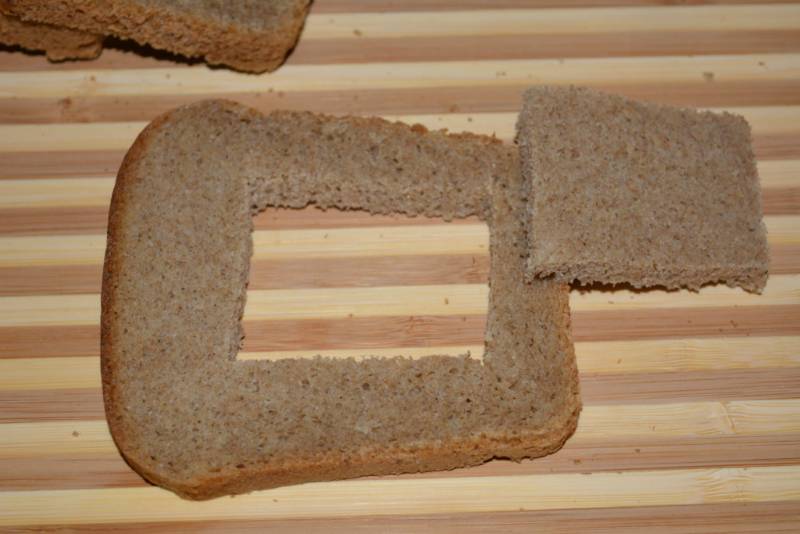 4. Gasoline, alcohol
4. Gasoline, alcohol
This method is suitable for all types of wallpapers. Mix gasoline with tooth powder. The resulting gruel will cope with old greasy stains: apply the mixture to the stain, wait until it dries completely. Brush off the rest.
Ballpoint pens, felt-tip pens, coffee and tea marks will disappear if you rub them with a cloth soaked in rubbing alcohol.
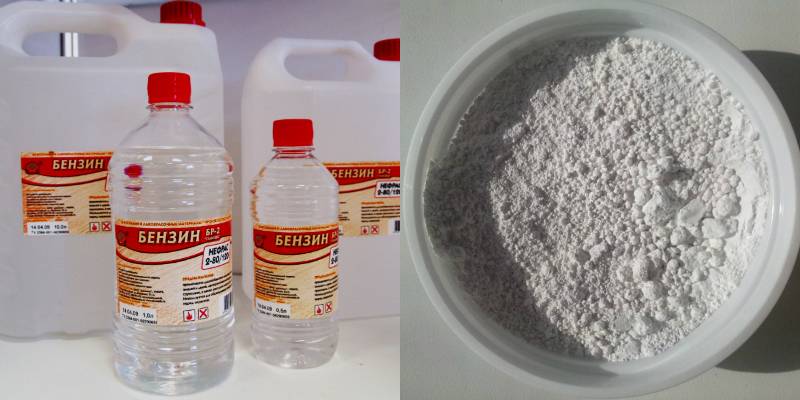 5. Soda, starch, baby powder
5. Soda, starch, baby powder
A mixture of water and starch (or baking soda) will work to remove grease from non-woven wallpaper. Apply the prepared paste to the stain and let dry. Brush off the rest with a soft brush, then rinse the wallpaper with warm water.
But it is better to treat the stain on the paper wallpaper with dry powder (talcum powder) and leave it for a while. Remove the rest of the powder with a napkin.
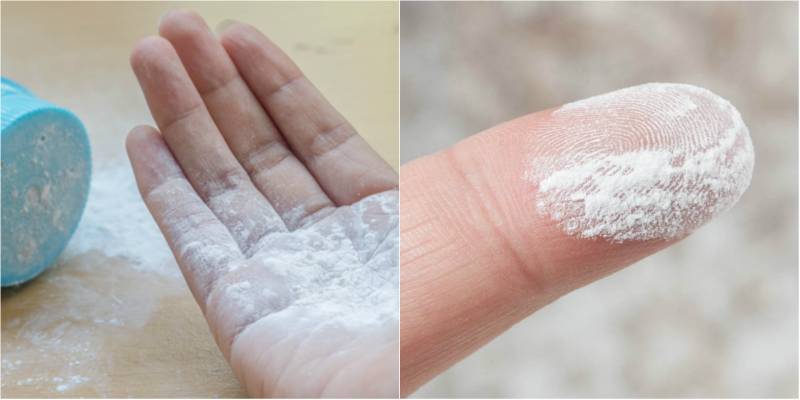 6. Iron
6. Iron
Apply a paper towel to the stain and iron it with a warm (not hot) iron. Change your napkins from time to time and let the wallpaper cool down. Work carefully, as iron stains cannot be removed from the coating! 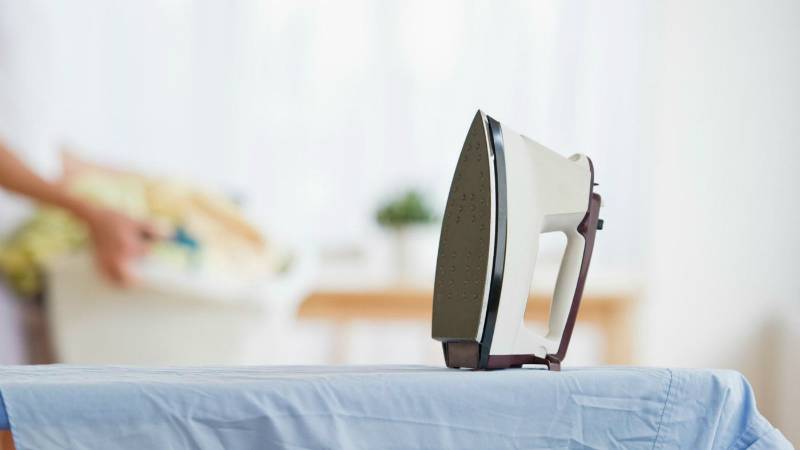 No matter how carefully the residents of the house treat the wall covering, troubles do happen. The main thing is not to get upset, but to take the necessary measures in time. Then the wallpapering can be postponed!
No matter how carefully the residents of the house treat the wall covering, troubles do happen. The main thing is not to get upset, but to take the necessary measures in time. Then the wallpapering can be postponed!

